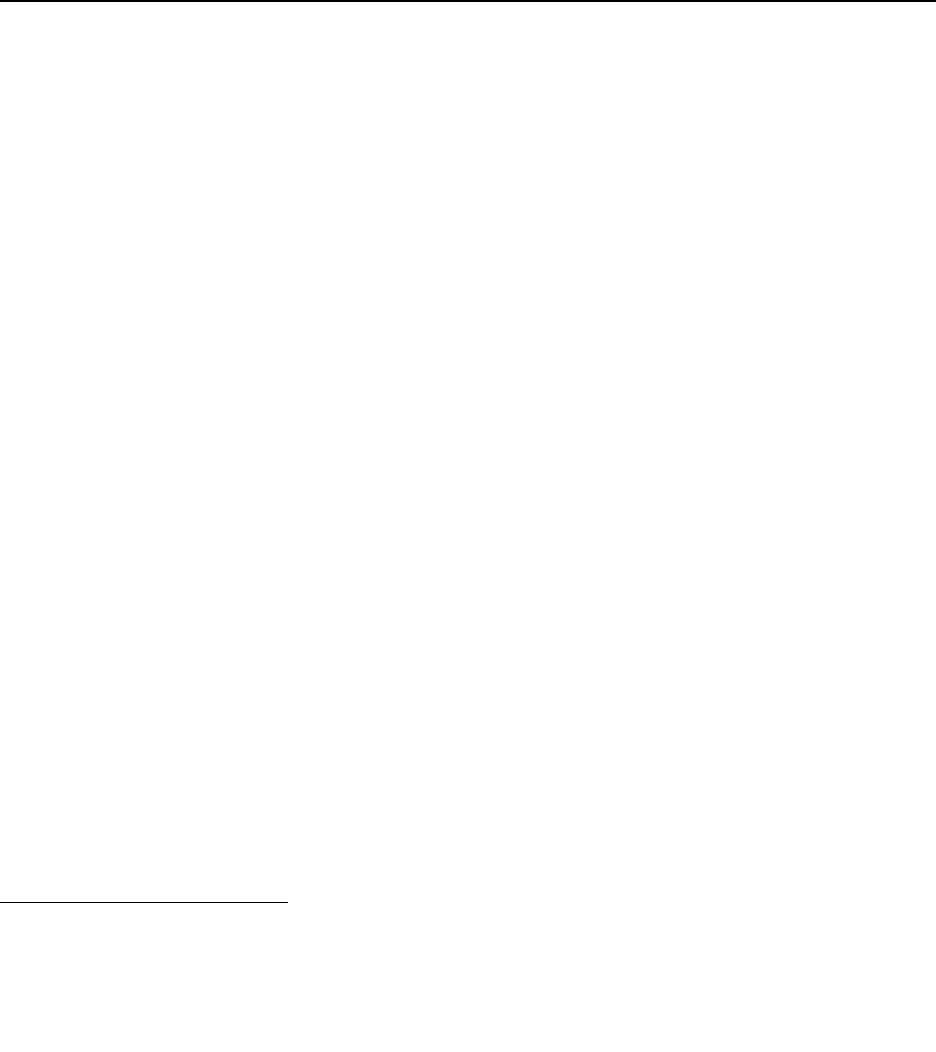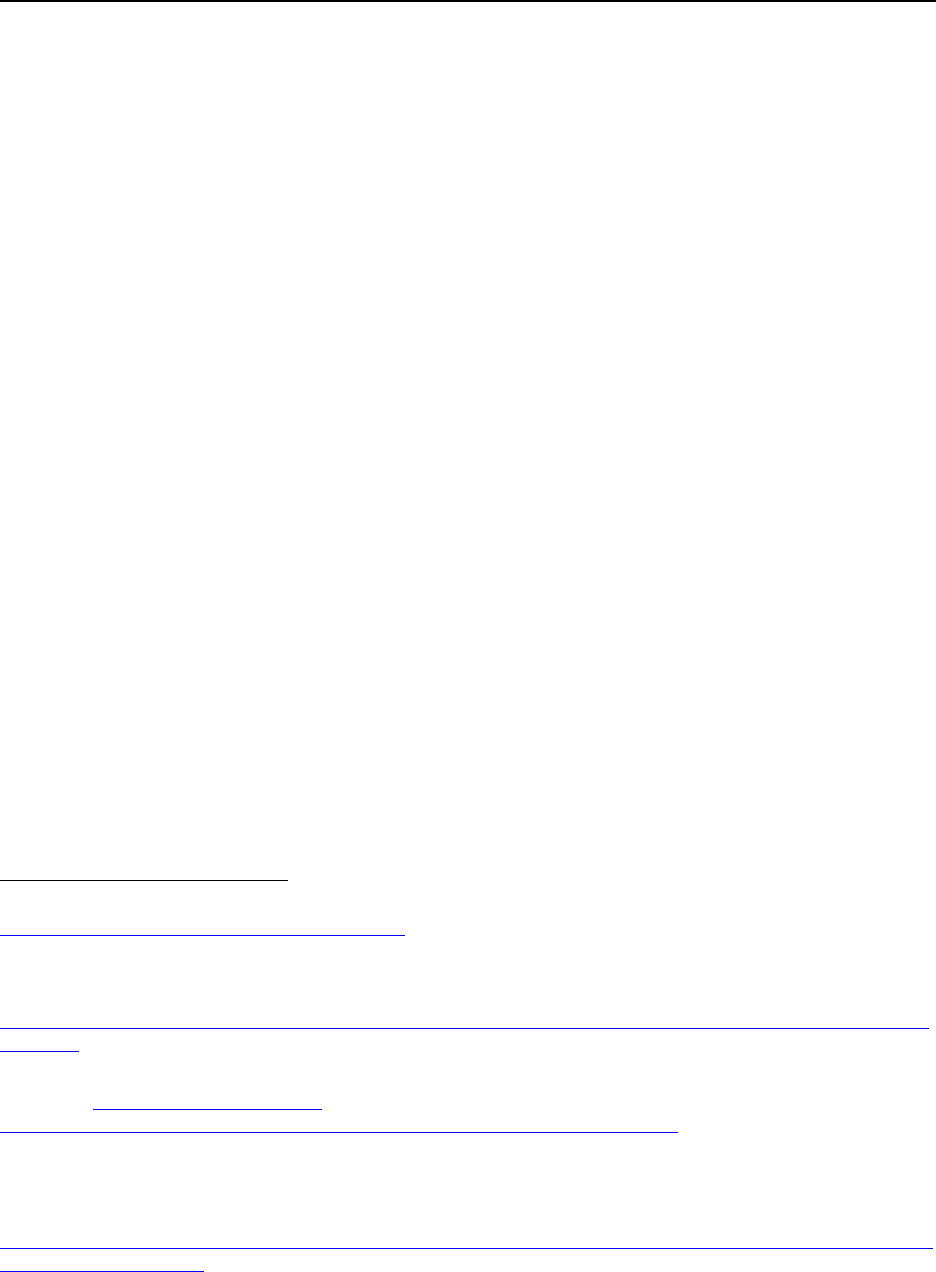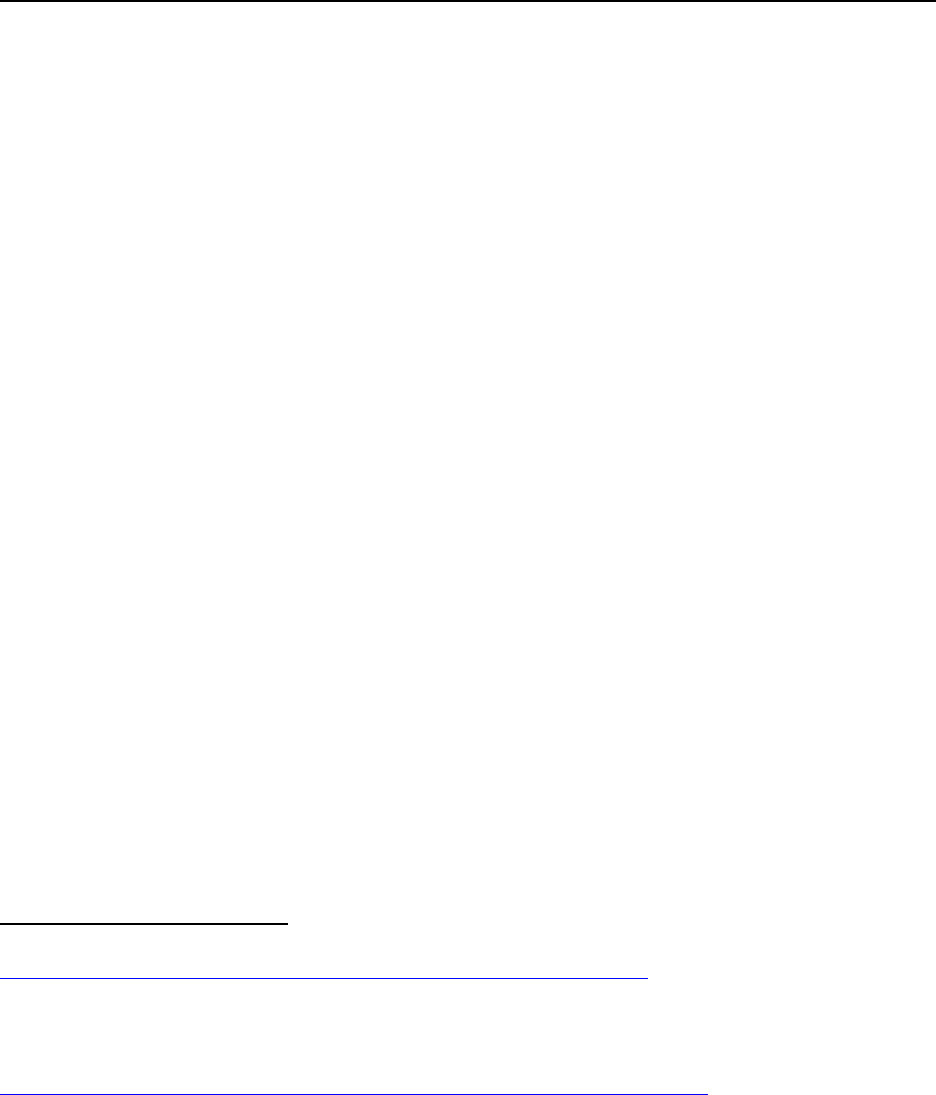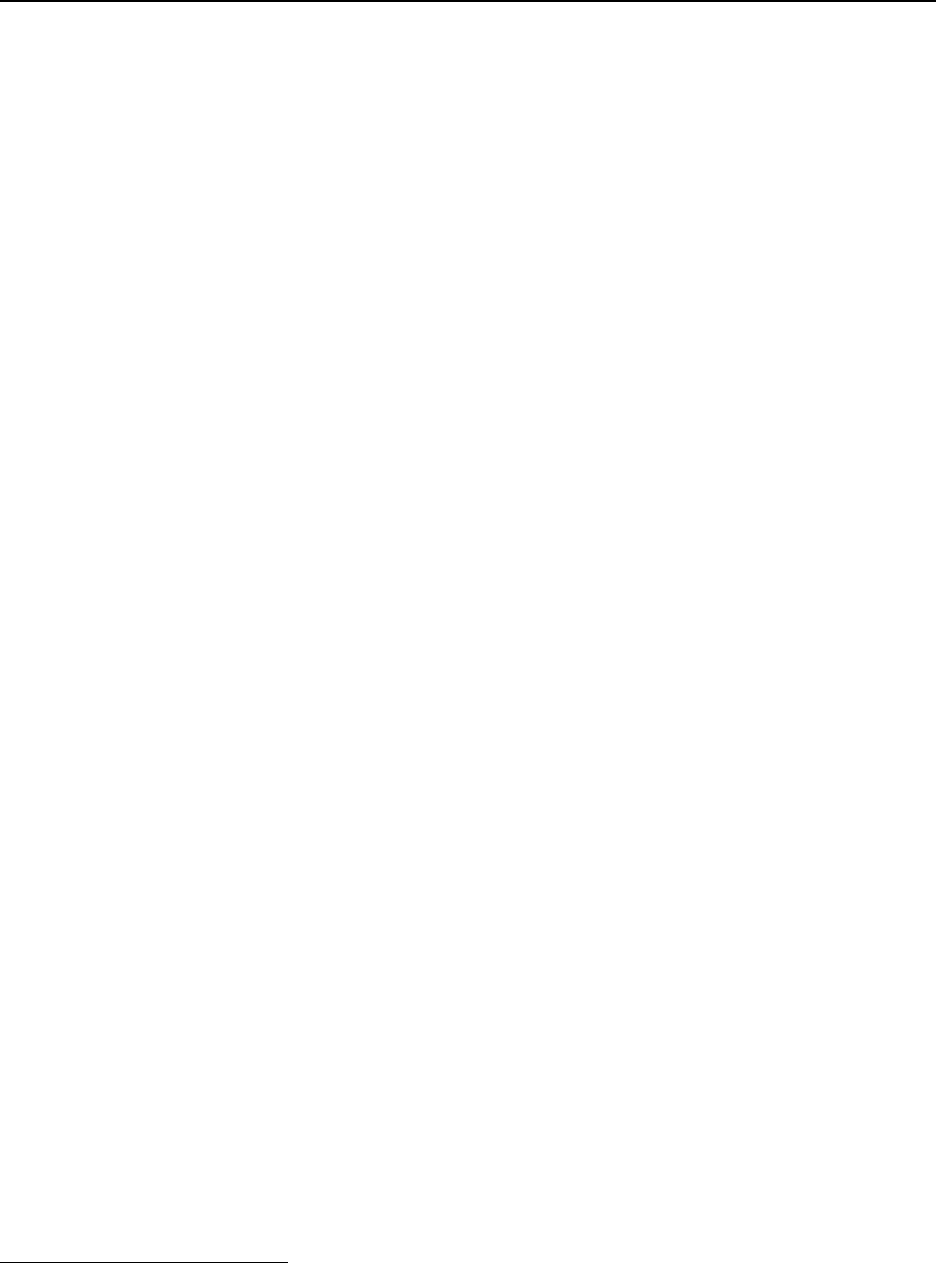
Federal Communications Commission FCC 20-186
Before the
Federal Communications Commission
Washington, D.C. 20554
In the Matter of
Rules and Regulations Implementing the
Telephone Consumer Protection Act of 1991
)
)
)
)
CG Docket No. 02-278
REPORT AND ORDER
Adopted: December 29, 2020 Released: December 30, 2020
By the Commission:
I. INTRODUCTION
1. The Telephone Consumer Protection Act of 1991 (TCPA) restricts certain calls to
residential and wireless telephone numbers absent the prior express consent of the called party or a
statutory exception, but authorizes the Commission to exempt certain calls from these restrictions.
1
The
Pallone-Thune Telephone Robocall Abuse Criminal Enforcement and Deterrence Act (TRACED Act)
directs the Commission to ensure that any exemption the Commission has granted under section
227(b)(2)(B) for calls to residential lines or under section 227(b)(2)(C) for calls to wireless numbers
includes certain requirements.
2
2. In this Order, we adopt measures to implement section 8 of the TRACED Act.
Specifically, as directed by the TRACED Act, we ensure that any exemption adopted pursuant to sections
227(b)(2)(B) or (C) includes requirements with respect to: (1) the classes of parties that may make such
calls; (2) the classes of parties that may be called; and (3) the number of such calls that may be made to a
particular called party.
3
II. BACKGROUND
3. The TCPA prohibits initiating “any telephone call to any residential telephone line using
an artificial or prerecorded voice to deliver a message without the prior express consent of the called
party” unless a statutory exception applies or the call is “exempted by rule or order by the Commission
under [section 227(b)(2)(B)].”
4
The TCPA also prohibits, without the prior express consent of the called
party, any call using an automatic telephone dialing system or an artificial or prerecorded voice to any
telephone number “assigned to a . . . cellular telephone service, . . . or any service for which the called
party is charged for the call” unless a statutory exemption applies.
5
In addition, in all but one instance,
artificial or prerecorded voice messages (regardless of whether they fall into an exemption) must state
1
Telephone Consumer Protection Act of 1991, Pub. L. No. 102-243, 105 Stat. 2394 (1991), codified at 47 U.S.C.
§ 227.
2
Pallone-Thune Telephone Robocall Abuse Criminal Enforcement and Deterrence Act, Pub. L. No. 116-105, 133
Stat. 3274, § 8 (2019) (TRACED Act).
3
Id. § 8(a).
4
See 47 U.S.C. § 227(b)(1)(B). The TCPA exempts from this prohibition calls for emergency purposes. See id.; see
also 47 CFR § 64.1200(f)(4) (definition of “emergency purposes”).
5
See 47 U.S.C. § 227(b)(1)(A)(iii). We refer to these calls herein as calls to “wireless numbers.”

Federal Communications Commission FCC 20-186
2
clearly at the beginning of the message the identity of the business, individual, or other entity that is
responsible for initiating the call.
6
The message also must state clearly the telephone number (other than
that of the autodialer or prerecorded-message player that placed the call) of such business, other entity, or
individual during or at the end of the message.
7
4. Section 227(b)(2)(B) authorizes the Commission to adopt, by rule or order, exemptions
from this ban on calls to residential lines for those “not made for a commercial purpose” and for “such
classes or categories of calls made for commercial purposes” that do not adversely affect the privacy
rights of the called party and do not transmit an unsolicited advertisement.
8
And section 227(b)(2)(C)
authorizes the Commission to adopt, by rule or order, exemptions from the prohibition on calls to wireless
numbers “that are not charged to the called party, subject to such conditions as the Commission may
prescribe as necessary in the interests of the privacy rights this section is intended to protect.”
9
5. As more fully explained in our TRACED Act NPRM,
10
the Commission has adopted
exemptions pursuant to these statutory provisions, beginning in 1992 for calls to residential lines that are
not made for a commercial purpose, calls made for a commercial purpose that do not contain an
unsolicited advertisement, and calls from tax-exempt nonprofit organizations,
11
and in 2012 for health
care-related calls subject to the Health Insurance Portability and Accountability Act of 1996 (HIPAA).
12
For wireless numbers, the Commission has exempted calls about package deliveries,
13
from financial
6
47 CFR § 64.1200(b)(1). In 2012, the Commission concluded by order that the Health Insurance Portability and
Accountability Act’s (HIPAA’s) existing protections already safeguard consumer privacy, and therefore exempted
prerecorded healthcare-related calls to residential lines subject to HIPAA from various TCPA requirements,
including the identification requirement. See Rules and Regulations Implementing the Telephone Consumer
Protection Act of 1991, CG Docket No. 02-278, Report and Order, 27 FCC Rcd 1830, 1853-54, paras. 60-61 (2012)
(2012 TCPA Order).
7
47 CFR § 64.1200(b)(2).
8
47 U.S.C. § 227(b)(2)(B).
9
Id. § 227(b)(2)(C).
10
See Rules and Regulations Implementing the Telephone Consumer Protection Act of 1991, CG Docket No. 02-
278, Notice of Proposed Rulemaking, 35 FCC Rcd 11186, 11187, para. 6 (2020) (TRACED Act NPRM).
11
See Rules and Regulations Implementing the Telephone Consumer Protection Act of 1991, CC Docket No. 92-90,
Report and Order, 7 FCC Rcd 8752, 8773-74, paras. 40-41 (1992) (1992 TCPA Order) (noting that the problem of
unsolicited commercial autodialed and prerecorded message calls represented a more serious concern for telephone
subscribers than non-commercial autodialed and prerecorded message calls). The Commission also concluded that a
solicitation to someone with whom a prior business relationship exists does not adversely affect subscriber privacy
interests and adopted an exemption for artificial voice or prerecorded voice messages delivered to consumers with
whom the company has an established business relationship. The Commission subsequently eliminated that
exemption and required companies to obtain prior express written consent before delivering artificial voice or
prerecorded voice telemarketing messages to their customers. See 2012 TCPA Order, 27 FCC Rcd at 1846-47,
paras. 39-43. In 2012, the Commission amended the exemption for artificial and prerecorded voice calls to
residential lines to include any call “made for a commercial purpose but [that] does not include or introduce an
advertisement or constitute telemarketing.” See 2012 TCPA Order, 27 FCC Rcd at 1860, Appx. A.
12
2012 TCPA Order, 27 FCC Rcd at 1853-54, paras. 60-61.
13
Rules and Regulations Implementing the Telephone Consumer Protection Act of 1991, CG Docket No. 02-278,
Order, 29 FCC Rcd 3432, 3437-38, para. 19 (2014) (Cargo Airline).

Federal Communications Commission FCC 20-186
3
institutions, from inmate phone service providers, and from certain healthcare callers, subject to specific
conditions.
14
6. Last year, Congress enacted section 8 of the TRACED Act to require that the
Commission ensure that any exemption granted under sections 227(b)(2)(B) or (C), allowing callers to
make artificial voice, prerecorded voice, or autodialed calls without consent, include certain conditions.
15
Specifically, section 8(a) requires that any such exemption contain requirements with respect to: “(i) the
classes of parties that may make such calls; (ii) the classes of parties that may be called; and (iii) the
number of such calls that a calling party may make to a particular called party.”
16
7. The TRACED Act directs the Commission to “prescribe such regulations or amend such
existing regulations, as necessary to ensure that [any] such exemption [issued under sections 227(b)(2)(B)
or (C)] contains each requirement [listed in section 8(a) of the TRACED Act]” no later than one year
from enactment, i.e., by December 30, 2020.
17
Further, section 8(b) states that “[t]o the extent such an
exemption contains such a requirement before such date of enactment, nothing in this section or the
amendments made by this section shall be construed to require the Commission to prescribe or amend
regulations relating to such requirement.”
18
8. On October 1, 2020, the Commission released a Notice of Proposed Rulemaking
initiating a proceeding to implement section 8 of the TRACED Act.
19
Specifically, the Commission
sought comment on whether to amend any of the exemptions the Commission has previously carved out
to comply with the TRACED Act.
20
In so doing, the Commission noted that there was no limit on the
number of calls a calling party may make pursuant to the exemptions for calls to residential telephone
lines, nor do the Commission’s rules require a caller to provide any means for a called party to opt out of
such exempted calls.
21
As a result, the Commission sought comment on whether to impose such a limit
and proposed to allow residential consumers to opt out of future such calls.
22
The Commission also
reviewed each of the exemptions issued under section 227(b)(2)(C) for calls made to wireless numbers
and noted that the existing conditions imposed on those exemptions by order appear to satisfy section 8 of
the TRACED Act.
23
Lastly, the Commission sought comment on whether a 1992 ruling that allowed
cellular carriers to contact their own subscribers without “additional consent” should be amended to
ensure compliance with section 8 of the TRACED Act.
24
The Commission also sought comment on
whether the current exemptions under section 227(b)(2)(B) and (C) remain in the public interest.
25
14
See, e.g., Rules and Regulations Implementing the Telephone Consumer Protection Act of 1991, CG Docket No.
02-278, WC Docket No. 07-135, Declaratory Ruling and Order, 30 FCC Rcd 7961, 7989, 8027-28, 8031-32, paras.
45-46, 138-39, 147-48 (2015) (2015 TCPA Declaratory Ruling).
15
TRACED Act § 8(a) (codified at 47 U.S.C. § 227(b)(2)(I)).
16
Id.
17
Id. § 8(b).
18
Id.
19
See TRACED Act NPRM, 35 FCC Rcd 11186.
20
Id. at 11188-89, para. 9.
21
Id. at 11189-91, paras. 11, 14, 16, 18.
22
Id. at 11189-91, paras. 12-13, 15, 17, 19.
23
Id. at 11191-92, paras. 20-23.
24
Id. at 11192-93, paras. 24-25.
25
Id. at 11189-93, paras. 11, 14, 16, 18, 20-24.

Federal Communications Commission FCC 20-186
4
9. Most commenters agree that the exemptions for calls to residential and wireless numbers
should be preserved, arguing that such exempted calls deliver vital information for consumers.
26
Commenters also overwhelmingly support codifying the existing exemptions the Commission adopted by
order for calls to wireless numbers.
27
They argue that including the exemptions in the rules will make it
easier for both callers and called parties to identify, understand, and comply with the rules.
28
Industry
commenters generally oppose a limit on the number of calls that can be made pursuant to any exemption,
asserting that such limits would interfere with timely communications with consumers and be potentially
burdensome and costly to implement.
29
Many of these commenters, however, support requiring callers to
establish procedures that permit consumers to opt out of unwanted calls.
30
Some consumers and
consumer interest groups encourage the Commission to limit the number of calls that a calling party may
make pursuant to any exemption and to require calling parties to comply with consumers’ do-not-call
requests.
31
Finally, most commenters contend that the long-standing exception permitting calls by
26
See, e.g., ACA Comments at 1-2 (the longstanding exemption from the TCPA for calls “made for a commercial
purpose but that do not include an advertisement” continues to serve the public interest and remains highly
beneficial for consumers); CBA Comments at 1; CUNA Comments at 4 (eliminating these exemptions would create
the same chilling effect on communications that arise with non-exempt calls); EEI Reply at 4, 6; FedEx Comments
at 9-10 (the Commission should keep the non-marketing exemption intact and find that these calls serve the public
interest); GTL Comments at 7 (exempted “informational calls” provide an important service to consumers). But see
Lucas Comments at 5-6 (the Commission should eliminate the exemption for all calls to a residential landline made
for a commercial purpose but that do not include an advertisement).
27
See, e.g., AHIP Comments at 6-7; Anthem Comments at 3 (supports codifying the exemption for healthcare
providers with clarification); GTL Comments at 5-6; NACDS Comments at 6-7 (supports codifying the exemption
for healthcare providers with clarification); NAMIC Comments at 4; NCIC Comments at 2-3; UHC Comments at 2.
28
See, e.g., NCLC et al. Comments at 14 (codifying the exemptions will make it easier to find them, so it will
increase understanding of the rules and compliance with them); Shaw Comments at 2-3.
29
See, e.g., ABA Comments at 7 (a numerical limitation on the number of calls that may be placed under the
informational calls exemption would impair banks’ ability to communicate with their customers, and may impede
their ability to comply with a regulatory requirement); ACA Comments at 1-3; AHIP Comments at 4 (limits on the
number of calls would require callers to prioritize certain communications over others, and coordinate the delivery
of such communications to avoid exceeding specified limits); CBA Comments at 1 (urges the Commission to avoid
setting a numerical limit on the number of calls that may be made “to avoid obstructing efficient and necessary
communication between financial institutions and their customers”); CUNA Comments at 5; Encore Comments at 2-
3; Heartland Credit Comments at 2; PACE Comments at 3-4 (an arbitrary limit provides no significant benefit to
consumers while adding complications for callers).
30
See AHIP Comments at 5-6 (generally supports the Commission’s adoption of an opt-out process, but one that is
more tailored to reflect the nature of the communications involved); Anthem Comments at 2; Confidential
Comments at 2 (supports opt-out requirements, but recommends that the FCC not require healthcare organizations to
provide an opt-out for calls directly related to their care or access to healthcare services); GTL Comments at 8;
NCLC et al. Comments at 12 (urging the Commission to mandate a uniform, clearly understandable method for
opting out that callers must recognize and abide by); PACE Comments at 2-3 (supports requiring callers making
prerecorded message calls to implement a do-not-call procedure, but opposes requiring an automated do-not-call
system); Shaw Comments at 2-3. But see, e.g., ACA Comments at 9 (the proposed recordkeeping requirements for
compliance with the do-not-call requirements would introduce additional, unnecessary obligations); CUNA
Comments at 6-7 (the opt-out and do-not-call proposals would impose significant burdens on companies); Illinois
Credit Comments at 2 (the Commission should not adopt an opt-out requirement for informational calls due to the
added burden and confusion this measure would cause financial institutions).
31
See, e.g., NCLC et al. Comments at 5, 11 (urging the Commission to place numerical limits on exempted calls,
particularly those that are transactional calls, which would include debt collection calls and limit healthcare calls in
the same manner as healthcare calls to wireless numbers); Lucas Comments at 9, 12, 14; MS MI Attorneys General
Reply Comments at 2.

Federal Communications Commission FCC 20-186
5
cellular carriers to their subscribers should be retained and that the exception is beyond the scope of the
TRACED Act.
32
III. DISCUSSION
10. In this Order, we take steps to implement section 8 of the TRACED Act. First, we adopt
our proposal from the TRACED Act NPRM to codify our exemptions for calls to wireless numbers into
our rules in order to make those exemptions more clear and understandable for both callers and
consumers.
33
Next, we amend our TCPA exemptions for calls made to residential telephone lines to
ensure each satisfies section 8(a)’s requirement to identify who can call, who can be called, and any call
limits.
34
The exemptions we amend are for: (1) non-commercial calls to a residence; (2) commercial calls
to a residence that do not include an advertisement or constitute telemarketing; (3) tax-exempt nonprofit
organization calls to a residence; and (4) HIPAA-related calls to a residence. Further, we conclude that
the conditions the Commission has already imposed on exemptions for calls made to wireless telephone
numbers under section 227(b)(2)(C) satisfy section 8. As a result, we make no changes to the exemptions
for: (1) package delivery-related calls to a wireless number; (2) financial institution calls to a wireless
number; (3) healthcare-related calls to a wireless number; and (4) inmate calling service calls to a wireless
number. Finally, we also decline to make any changes to our 1992 ruling that allows cellular carrier calls
to their own subscribers because this ruling does not fall within the requirements of section 8 of the
TRACED Act.
A. Codifying Exemptions
11. First, we adopt our proposal to codify all existing exemptions under section 227(b)(2)(C)
in our rules.
35
The TCPA allows the Commission to exempt certain calls “by rule or order.”
36
To make
the requirements more clear and easy to understand for both callers and called parties, we codify the
exemptions in our rules where we previously have not done so.
37
Commenters support codification and
agree it will provide necessary clarity.
38
No commenter objected to or raised any concerns with our doing
so.
B. Section 227(b)(2)(B) Exemption Restrictions
1. Non-Commercial Calls to a Residence
12. To implement the TRACED Act and to harmonize our rules with the limits the
Commission has imposed on exempted calls to wireless numbers, we amend our requirements for non-
commercial calls to a residence as described below. We agree with those commenters that argue this
32
See CTIA Comments at 2; T-Mobile Comments at 6; Verizon Comments at 1. But see Shaw Comments at 1 (the
exemption does not remain in the public interest).
33
TRACED Act NPRM, 35 FCC Rcd at 11189, para. 10.
34
See TRACED Act § 8(a) (codified at 47 U.S.C. § 227(b)(2)(I)).
35
See TRACED Act NPRM, 35 FCC Rcd at 11189, para. 10. We note that the exemptions under section
227(b)(2)(B) for calls made to residential lines were adopted by rule. As a result, those exemptions are codified in
our existing rules. See 47 CFR § 64.1200(a)(3).
36
See 47 U.S.C. §§ 227(b)(1)(B), (C).
37
See Appx. A. The exemptions that the Commission adopted by order and that we now codify are the exemptions
for package delivery-related calls to a wireless number, financial institution calls to a wireless number, healthcare-
related calls to a wireless number, and inmate calling service calls to a wireless number.
38
See, e.g., AHIP Comments at 7; Anthem Comments at 2-4; GTL Comments at 8-9; NCLC et al. Comments at 14.

Federal Communications Commission FCC 20-186
6
exemption (as amended to be in conformance with the TRACED Act) is in the public interest and should
be retained.
39
13. Callers. The Commission has exempted calls “not made for a commercial purpose” from
the prohibition on artificial or prerecorded voice messages to residential telephone lines.
40
We conclude
that this exemption satisfies the TRACED Act’s requirements with respect to “the classes of parties that
may make such calls.” Because this exemption is predicated on calls not being made for a commercial
purpose, the class of parties that may make such calls is limited to callers that are not calling for a
commercial purpose.
41
The Commission has indicated, for example, that this exemption includes calls
conducting research, market surveys, political polling, or similar noncommercial activities.
42
The purpose
of such calls is not to advertise or market a commercial product or service. As a result, we conclude that
the class of parties that may use this exemption is any caller that is not calling for a commercial purpose.
No commenter disagrees with this conclusion.
43
14. Called parties. We further conclude that this exemption satisfies the TRACED Act’s
requirement with respect to the “classes of parties that may be called” because this exemption applies
only to calls made to residential telephone lines.
44
Thus, only residential telephone users may be called
under this exemption. No commenter disagrees with this conclusion.
15. Number of calls. The Commission has not, however, limited the number of calls a calling
party may make pursuant to this exemption, nor do the Commission’s rules require a caller to provide any
means for a called party to opt out of such exempted calls. The TRACED Act requires that we limit “the
number of such calls that a calling party may make to a particular called party”—or as put by one
commenter, the “Commission does not have discretion to decline to establish numerical limits.”
45
We
agree with NCLC and other consumer groups that we should limit the number of exempted calls to
39
See, e.g., CBA Comments at 1; CUNA Comments at 4; GTL Comments at 7.
40
See 47 CFR § 64.1200(a)(3)(ii).
41
See, e.g., GTL Comments at 7.
42
See 1992 TCPA Order, 7 FCC Rcd at 8774, para. 41.
43
One commenter “proposes an additional category to the exemption . . . for calls on behalf of schools, e.g.;
emergency notifications and educational communications.” See MS MI Attorneys General Reply Comments at 2.
But the Commission has already clarified that many such calls are emergency calls and thus do not require consent
or, even if not an emergency, may already have consent where the consumer has merely provided the school with
their phone number. See Blackboard, Inc. Petition for Expedited Declaratory Ruling, Edison Electric Institute and
American Gas Association Petition for Expedited Declaratory Ruling, CG Docket No. 02-278, Declaratory Ruling,
31 FCC Rcd 9054, 9061-65, paras. 17, 20-25 (2016) (clarifying that “school callers may lawfully make autodialed
calls and send automated texts to student family wireless phones without consent for emergencies including weather
closures, fire, health risks, threats, and unexcused absences” and granting “school callers additional relief for calls
and messages that, while not emergencies, nevertheless are closely related to the school’s mission, such as
notification of an upcoming teacher conference or general school activity, by clarifying our understanding that such
calls are (absent evidence to the contrary) made with the prior express consent of the called party when a telephone
number has been provided to an educational institution by that called party”). Other school calls to residential lines
could also qualify as an exempted call “not made for a commercial purpose.”
44
See 47 U.S.C. § 227(b)(1)(B); 47 CFR § 64.1200(a)(3).
45
Section 8(a) of the TRACED Act provides that the Commission: “(I) shall ensure that any exemption under
subparagraph (B) or (C) contains requirements for calls made in reliance on the exemption with respect to— . . . (iii)
the number of such calls that a calling party may make to a particular called party.” See 47 U.S.C. § 227(b)(2)(I)
(emphasis added);
see also NCLC et al. Comments at 6.

Federal Communications Commission FCC 20-186
7
residential numbers.
46
These protections will greatly reduce the interruptions from unwanted calls and
reduce the burden on residential telephone users to manage such calls.
47
As Congress noted in enacting
the TCPA, artificial and prerecorded voice calls are often a greater invasion of privacy than live calls
because the call recipient cannot interact with the caller.
48
Interruptions caused by artificial and
prerecorded voice messages are especially concerning during the current COVID-19 pandemic when
many people are working from home and many children are participating in remote instruction from
home. We therefore amend our rules to limit the number of calls that can be made to a particular
residential line pursuant to this exemption to three artificial or prerecorded voice calls within any
consecutive 30-day period. These limits give non-commercial callers several opportunities over a month-
long period to convey their message and to obtain consent for future calls. As NCLC notes,
49
the
Commission selected this limit as an appropriate balance in the context of federal debt collection calls,
based on support in the record, while recognizing that there was no consensus what the exact number
should be.
50
We believe these limits strike the appropriate balance between these callers reaching
consumers with information and reducing the number of unexpected and unwanted calls consumers
currently receive. We intend to monitor these limits to determine whether they may require adjustment in
light of our experience.
16. We note that the Commission has placed numerical limitations on the number of calls
that can be made to a wireless number under the exemptions authorized by section 227(b)(2)(C).
51
In
addition, we note that no caller that conducts research, market surveys, political polling, or similar non-
commercial activities commented on a numerical limit. To the extent that commenters expressed
opposition to numerical limits on any residential exemptions by contending that any such limits will
interfere with their ability to communicate with consumers, we emphasize that callers can simply get
consumer consent to make more than three non-commercial calls using an artificial or prerecorded voice
within any consecutive 30-day period.
52
Callers can use exempted calls to obtain consent if the calls
satisfy other applicable conditions. We believe that consumers who welcome the calls would be likely to
readily give such consent. And because the TCPA only restricts calls initiated with an artificial or
prerecorded voice to a residential telephone, callers can use a live agent to make such calls without
46
See NCLC et al. Comments at 5-11; MS MI Attorney General Reply Comments at 2 (supporting limits on most
exempted calls).
47
See NCLC et al. Comments at 6 (indicating that residential telephone customers receive over twice as many
unwanted robocalls as the average wireless customer).
48
See S.Rep. No. 102–178, 102d Cong., 1st Sess. (1991) (noting that prerecorded calls are “more of a nuisance and
a greater invasion of privacy than calls placed by ‘live’ persons” because, among other things, callers “cannot
interact with the customer except in preprogrammed ways,” and such calls “do not allow the caller to feel the
frustration of the called party”); see also NCLC et al. Comments at 6 (noting that consumers strongly object to
unwanted prerecorded calls); MS MI Attorney General Reply Comments at 2 (contending that prerecorded calls
have the potential to be invasive).
49
NCLC et al. Comments at 5-11.
50
See Rules and Regulations Implementing the Telephone Consumer Protection Act of 1991, 31 FCC Rcd 9074
paras. 34-36 (2016). The Supreme Court’s subsequent invalidation of the statute underlying this determination had
no occasion to address the Commission’s limit on the number of permitted calls. See Barr v. American Ass’n of
Political Consultants, Inc., 140 S. Ct. 2335 (2020).
51
Cargo Airline, 29 FCC Rcd at 3437-38, para. 18; 2015 TCPA Declaratory Ruling, 30 FCC Rcd at 7989, 8027-28,
8032, paras. 45, 138, 147.
52
See Letter from Jonathan Thessin, Vice President/Senior Counsel, ABA, to Marlene H. Dortch, Secretary, FCC,
CG Docket No. 02-278, at 2-5 (filed Dec. 2, 2020); Letter from James H. Ferguson, Corporate Vice President,
FedEx, to Marlene H. Dortch, Secretary, FCC, CG Docket No. 02-278, at 1-3 (filed Dec. 7, 2020); CBA Comments
at 1; CUNA Comments at 5; GTL Comments at 7-8.

Federal Communications Commission FCC 20-186
8
running afoul of the TCPA.
53
As a result, we conclude that this limitation adequately balances the privacy
interests of consumers with the ability of non-commercial callers to communicate with the public.
17. Our ruling therefore satisfies the requirements of the TRACED Act while bringing the
exemption for calls made to residential telephone numbers in line with other exempted calls to wireless
telephone numbers that contain a numerical limitation on the number of calls that can be made. As
discussed above, we agree with those commenters that contend that a limitation on the number of calls
that can be made under this exemption to a particular called party reduces the number of intrusive or
unwanted robocalls consumers receive at their homes.
54
As NCLC notes, consumers object strongly to
unwanted, prerecorded calls and the absence of any limitation on such calls to residential lines has
become a source of consumer frustration.
55
A specific limitation on the number of such calls that can be
made under this exemption will ensure that residential telephone users have reasonable safeguards from
excessive exempted calls that use an artificial and prerecorded voice message.
18. We disagree with several commercial entities that suggest that any numerical limitation is
unnecessary or burdensome.
56
Section 8 requires us to ensure that there are requirements with respect to
the “number of . . . calls” that a calling party may make to a particular called party under any exemption
issued under section 227(b)(2)(B).
57
19. Commenters did not submit any specific cost or benefit data on potential call limits in
response to the TRACED Act NPRM. We note that, while many industry commenters claim that any
limits on such calls would be too burdensome and unnecessary, they offer no compelling evidence or
arguments to support those claims. There are substantial costs to consumers from unwanted, prerecorded
calls. As the numerical limitations only apply to artificial or prerecorded calls to residential numbers, and
not live agent calls, the impact on callers is limited.
20. And there is no record evidence that similar numerical limitations the Commission
imposed in other contexts have proven burdensome or unduly inhibit the ability of callers to make
effective use of those exemptions.
58
In addition, as discussed above, callers can make more than three
non-commercial calls using an artificial or prerecorded voice message within any consecutive 30-day
period by obtaining the prior express consent from the called party, including by using an exempted call
to obtain consent. And because the TCPA only restricts calls initiated with an artificial or prerecorded
voice to a residential telephone, callers can use a live agent to initiate such calls without running afoul of
the TCPA.
59
21. Opt-out Requirement. We agree with commenters urging us to adopt an opt-out
mechanism to empower consumers to stop unwanted calls made pursuant to an exemption under section
53
See 47 U.S.C. § 227(b)(1)(B); 47 CFR § 64.1200(a)(3).
54
See NCLC et al. Comments at 5-11 (recommending a three-call per 30 days per-person limit on certain exempted
calls); MS MI Attorneys General Reply Comments at 1-2.
55
See NCLC et al. Comments at 6 (suggesting that unwanted prerecorded calls are one reason that many consumers
are abandoning landline service); MS MI Attorneys General Reply Comments at 1 (noting that robocalls are a
“plague to consumers” with over 350,000 current complaints filed with the Mississippi Public Service Commission).
56
See, e.g., ABA Comments at 6-7 (numerical limitation would impair their ability to communicate with
customers); AFSA Reply at 2; CBA Comments at 1; CUNA Comments at 5; CUNA Comments at 5; Illinois Credit
Comments at 2.
57
See TRACED Act § 8(a) (codified at 47 U.S.C. § 227(b)(2)(I)).
58
Cargo Airline, 29 FCC Rcd at 3437-38, para. 18; 2015 TCPA Declaratory Ruling, 30 FCC Rcd at 7989, 8027-28,
8032, paras. 45, 138, 147.
59
See 47 U.S.C. § 227(b)(1)(B); 47 CFR § 64.1200(a)(3).

Federal Communications Commission FCC 20-186
9
227(b)(2)(B).
60
We thus require callers to allow recipients of artificial and prerecorded voice message
calls made under this exemption to opt out of such calls using either of the mechanisms described in our
rules.
61
22. Our rules require that residential telephone subscribers be permitted to opt out of artificial
and prerecorded voice calls that contain telemarketing messages.
62
Under these rules, a consumer who
wants to avoid further artificial or prerecorded telemarketing calls can “opt out” by dialing a telephone
number (required to be provided in the artificial or prerecorded voice message) to register his or her do-
not-call request in response to that call.
63
Our rules also require that, in every case where an artificial or
prerecorded voice telephone message includes or introduces an advertisement or constitutes telemarketing
and is delivered to a residential telephone line, the caller must provide an automated, interactive voice-
and/or key press-activated opt-out mechanism for the called person to make a do-not-call request.
64
We
also note that the Commission has conditioned exemptions granted under section 227(b)(2)(C) for calls
made to wireless numbers on enabling the called party to opt out of future autodialed and artificial or
prerecorded voice calls from the calling party.
65
23. An opt-out mechanism will give consumers more say in how many calls they receive and
align this exemption with our wireless call exemptions under section 227(b)(2)(C) that also give
consumers the choice to opt out. To effectuate an opt-out mechanism, callers must comply with the
requirements of sections 64.1200(b) and (d) of our rules, which govern the process for handling do-not-
call requests.
66
24. We disagree with those commenters that suggest that an opt-out process is burdensome or
unnecessary.
67
The Commission has conditioned calls made under the exemptions for calls to wireless
numbers on enabling consumers to opt out.
68
The technology that enables opt out is commonplace and
easily accessible; the Commission’s rules have required telemarketers to use the available tools and
60
See AHIP Comments at 5-6 (generally supports the Commission’s adoption of an opt-out process, but one that is
more tailored to reflect the nature of the communications involved); NCLC et al. Comments at 12 (strongly
supporting the proposal to give consumers the right to opt out of calls made under the exemptions); Lucas
Comments at 3; Shaw Comments at 3.
61
As discussed further below, we also amend our rules for the other exemptions issued under section 227(b)(2)(B)
to require an opt-out mechanism. 47 U.S.C. § 227(b)(2)(B).
We note that this opt-out requirement does not apply to
those artificial or prerecorded voice message calls that are made for an “emergency purpose” or with the prior
express consent of the called party because such calls are not made pursuant to an exemption adopted under section
227(b)(2)(B).
62
See, e.g., 47 CFR § 64.1200(b).
63
Id. § 64.1200(b)(2).
64
Id. § 64.1200(b)(3).
65
See, e.g., Cargo Airline, 29 FCC Rcd at 3438, para. 18; 2015 TCPA Declaratory Ruling, 30 FCC Rcd at 7989,
8028, 8032, paras. 45, 138, 147.
66
47 CFR §§ 64.1200(b), (d). Under the rules, a caller must honor a residential subscriber’s do-not-call request
within a reasonable time from the date such request is made. This period may not exceed 30 days from the date of
such request. See id. § 64.1200(d)(3).
67
See, e.g., CUNA Comments at 4 (should not impose burdensome new requirements on informational calls);
Illinois Credit Comments at 2 (such requirements would be burdensome for smaller financial institutions with small
staffs and limited resources).
68
See Appx. A.

Federal Communications Commission FCC 20-186
10
equipment since 2012.
69
However, we recognize that this requirement will impose some additional
burden justifying an implementation period. As a result, and as discussed further below, we provide a
reasonable timeframe of six months for affected parties to take measures necessary to effectuate this
requirement before these rule amendments become effective.
2. Commercial Calls to a Residence that Do Not Constitute Telemarketing
25. The Commission has exempted calls “made for a commercial purpose but [that] do[] not
include or introduce an advertisement or constitute telemarketing” from the prohibition on using an
artificial or prerecorded voice message to call residential telephone lines.
70
To implement the TRACED
Act and to harmonize our rules with the limits the Commission has imposed on exempted calls to wireless
numbers, we amend our requirements for permitted commercial calls to a residence as described below.
Commenters argue that this exemption benefits consumers by enabling businesses to communicate with
their customers on important matters such as prescription refill reminders, power outage updates, and data
security breaches.
71
We agree that, if these calls do not contain advertising or solicit the purchase of
goods or services and otherwise conform to the requirements of the TRACED Act, they should remain
exempt from the TCPA prohibitions as the record shows consumers generally want and expect them.
72
26. Callers. This exemption does not specify the “classes of parties that may make” such
calls. Because this exemption is predicated on calls not including an advertisement or constituting
telemarketing, we deem these classes of parties as those making calls for a commercial purpose where the
call does not introduce an advertisement or constitute telemarketing.
73
27. Called parties. We conclude that this exemption already satisfies the TRACED Act’s
requirement with respect to the “classes of parties that may be called” because this exemption applies
only to calls made to residential telephone lines.
74
No commenter disagrees with this conclusion.
28. Number of calls. The Commission has not limited the number of calls a calling party
may make pursuant to this exemption, nor do the Commission’s rules require a caller to provide any
means for a called party to opt out of such exempted calls. The TRACED Act requires that we limit “the
number of such calls that a calling party may make to a particular called party”—or as put by one
commenter, the “Commission does not have discretion to decline to establish numerical limits.”
75
We
therefore limit the number of calls that can be made pursuant to this exemption to three artificial or
prerecorded voice calls within any consecutive 30-day period.
76
In this regard, we incorporate by
reference the discussion above relating to the number of calls that can be made pursuant to the exemption
for calls not made for a commercial purpose, as well as our discussion below on the timeframe and
effective date for implementation mechanisms to comply with these requirements.
29. Opt-Out Requirement. We also require callers to allow recipients of artificial and
prerecorded voice message calls made pursuant to the exemption for commercial calls to opt out of such
69
See 2012 TCPA Order, 27 FCC Rcd at 1857, para. 69 (concluding “there is no indication in our record that
implementing the proposed opt-out mechanism would be especially burdensome or pose extraordinary technical
issues”).
70
47 CFR § 64.1200(a)(3)(iii).
71
See, e.g., ACA Comments at 4; EEI Reply at 4; FedEx Comments at 9-10. But see Lucas Comments at 5-6.
72
See, e.g., AFSA Reply at 2; CBA Comments at 1-2; CUNA Comments at 4; GTL Comments at 7.
73
See, e.g., GTL Comments at 7-8. But see Lucas Reply at 2 (arguing that the exemption is too broad).
74
47 CFR § 64.1200(b)(2)(B).
75
See 47 U.S.C. § 227(b)(2)(I); NCLC et al. Comments at 6.
76
See Appx. A.

Federal Communications Commission FCC 20-186
11
calls using either of the mechanisms described in our rules.
77
In so doing, we incorporate by reference the
analysis relating to the adoption of an opt-out mechanism for non-commercial calls to residential
telephone numbers. We agree with commenters that a consumer’s right to opt out of unwanted calls
should apply to any call made pursuant to any of the exemptions under section 227(b)(2)(B).
78
3. Tax-exempt Nonprofit Organization Calls to a Residence
30. The Commission has exempted calls made by or on behalf of a tax-exempt nonprofit
organization from the prohibition on using an artificial or prerecorded voice to deliver a message to a
residential telephone line.
79
To implement the TRACED Act and harmonize our rules with the limits the
Commission has placed on exempted calls to wireless numbers, we amend our requirements for exempted
calls made by or on behalf of tax-exempt nonprofit organizations as described below. We agree that this
exemption remains in the public interest and should be retained subject to conformance with the
requirements of the TRACED Act.
80
31. Callers. We conclude that this exemption satisfies the TRACED Act’s requirements with
respect to the “classes of parties that may make such calls” (tax-exempt nonprofit organizations). No
commenter disagrees with this conclusion.
32. Called parties. We also conclude that this exemption already satisfies the TRACED
Act’s requirements with respect to the “classes of parties that may be called” because this exemption
applies only to calls made to residential telephone lines. No commenter disagrees with this conclusion.
33. Number of calls. The Commission has not limited the number of calls a calling party
may make pursuant to this exemption, nor do the Commission’s rules require a caller to provide any
means for a called party to opt out of such exempted calls. As discussed above, the TRACED Act
requires that we limit “the number of such calls that a calling party may make to a particular called party”
or as put by one commenter, the “Commission does not have discretion to decline to establish numerical
limits.”
81
We therefore limit the number of calls that can be made pursuant to this exemption to three
artificial or prerecorded voice calls within any consecutive 30-day period.
82
In this regard, we incorporate
by reference the discussion above relating to the number of calls that can be made pursuant to the
exemption for calls not made for a commercial purpose, as well as our discussion below on the timeframe
and effective date for implementing mechanisms to comply with these requirements.
34. Opt-Out Requirement. We also require callers to allow recipients of artificial and
prerecorded voice message calls made pursuant to the exemption for tax-exempt nonprofit organizations
to opt out of such calls using either of the mechanisms described in our rules.
83
In so doing, we
77
47 CFR § 64.1200(b)(2) (by dialing a telephone number required to be provided in the artificial or prerecorded
voice message), (3) (by providing an automated, interactive voice- and/or key press-activated opt-out mechanism for
the called person to make a do-not-call request).
78
See NCLC et al. Comments at 12 (agreeing that there should be a limit on such calls, but advocating for a one-
call-per-event limitation); see also Shaw Comments at 3 (contending that the called party should be able to opt out
of any call covered by any of the exemptions).
79
47 CFR § 64.1200(a)(3)(iv).
80
See Heartland Credit Comments at 1; MS MI Attorneys General Reply Comments at 1-2; NCLC et al. Comments
at 9-10 (arguing that such exempted calls should be limited to one call per event).
81
See 47 U.S.C. § 227(b)(2)(I); NCLC et al. Comments at 6.
82
See Appx. A.
83
See 47 CFR § 64.1200(b)(2) (by dialing a telephone number required to be provided in the artificial or
prerecorded voice message), (3) (by providing an automated, interactive voice- and/or key press-activated opt-out
mechanism for the called person to make a do-not-call request).

Federal Communications Commission FCC 20-186
12
incorporate by reference the analysis relating to the adoption of an opt-out mechanism for non-
commercial calls to residential telephone numbers. We agree with commenters that it is appropriate to
adopt similar limitations on the number of calls that can be made pursuant to any of the exemptions under
section 227(b)(2)(B).
84
4. HIPAA Calls to a Residence
35. The Commission has exempted HIPAA-related calls that deliver a healthcare message
from the prohibition on using an artificial or prerecorded voice to deliver a message to residential
telephone lines.
85
The Commission concluded that such calls serve a public interest purpose: to ensure
continued consumer access to healthcare-related information.
86
We find that the record shows that the
exemption continues to benefit consumers and should be retained subject to compliance with the
requirements of the TRACED Act.
87
36. Callers. We conclude that this exemption satisfies the TRACED Act’s requirements with
respect to the “classes of parties that may make” such calls (calls “made by, or on behalf of, a ‘covered
entity’ or its ‘business associate’ as those terms are defined in the HIPAA Privacy Rule, 45 CFR
160.103”).
37. Called parties. We also conclude that this exemption already satisfies the TRACED
Act’s requirements with respect to the “classes of parties that may be called” because this exemption
applies only to calls made to residential telephone lines.
88
No commenter disagrees with these
conclusions.
38. Number of calls. The Commission has not limited the number of calls a calling party
may make pursuant to this exemption, nor do the Commission’s rules require a caller to provide any
means for a called party to opt out of such exempted calls. As discussed above, the TRACED Act
requires that we limit “the number of calls that a calling party may make to a particular called party.”
89
We therefore amend our rules to limit the number of calls that can be made pursuant to this exemption to
one artificial or prerecorded voice call per day up to a maximum of three artificial or prerecorded voice
calls per week.
90
We note that this limitation is identical to the condition imposed on healthcare calls to
wireless numbers that are exempted under section 227(b)(2)(C).
91
39. We disagree with commenters that suggest that limiting the number of HIPAA calls to
residences will unduly restrict the ability of healthcare providers to communicate with patients.
92
As
discussed further below, we imposed this same limit on exempted HIPAA calls to wireless telephone
84
See NCLC et al. Comments at 12.
85
See 47 CFR § 64.1200(a)(3)(v).
86
See 2012 TCPA Order, 27 FCC Rcd at 1853, paras. 60-61 & n.176 (citing comments from entities arguing the
exemption would allow the continuation of important communications by health care providers and health insurance
plans such as prescription refills, immunization reminders, and post-hospital discharge follow-up).
87
See, e.g., Anthem Comments at 2; HMS Comments at 1; MS MI Attorneys General Reply Comments at 2;
NACDS Comments at 2-3.
88
Id.
89
See TRACED Act § 8(a) (codified at 47 U.S.C. § 227(b)(2)(I)).
90
See Appx. A; see also NCLC et al. Comments at 11 (urging the Commission to adopt limitations that are similar
to those imposed on healthcare calls to wireless numbers, including a limitation on the number of such calls that can
be made).
91
See 2015 TCPA Declaratory Ruling, 30 FCC Rcd at 8031-32, paras. 147-48.
92
See, e.g., AHIP Comments at 4; Confidential Comments at 1-2; MS MI Attorneys General Reply Comments at 2.

Federal Communications Commission FCC 20-186
13
numbers five years ago and have no credible evidence it has unduly restricted healthcare providers’
ability to communicate with their patients. And callers can use any of the three exempted calls within the
consecutive seven-day period to obtain the prior express consent of the called party or use a live agent
rather than an artificial or prerecorded voice to make additional calls. As a result, we believe this limit
reasonably balances the privacy rights of consumers with the legitimate needs of healthcare providers to
communicate with their patients. In this regard, we incorporate by reference the discussion above relating
to the number of calls that can be made pursuant to the exemption for calls not made for a commercial
purpose, as well as our discussion below on the timeframe and effective date for implementing
mechanisms to comply with these requirements.
40. Opt-Out Requirement. We require callers to allow recipients of artificial and prerecorded
voice message calls made pursuant to the HIPAA exemption to opt out of such calls using either of the
opt-out mechanisms described in our rules.
93
In so doing, we incorporate by reference the analysis
relating to the adoption of an opt-out mechanism for non-commercial calls to residential telephone
numbers. We agree with commenters that it is appropriate to adopt similar limitations on the number of
calls that can be made pursuant to any of the exemptions under section 227(b)(2)(B).
94
5. Implementation and Effective Date
41. We recognize that implementation of the numerical limits and opt-out requirements may
present some burdens to callers and we therefore establish a six-month period to do so before the new
requirements take effect. This will ensure that affected calling parties can implement necessary changes
in a cost-effective way that makes sense for their individual business models. We believe six months
represents a reasonable timeframe to implement steps that include, for example, ensuring opt-out contact
information is added to all artificial or prerecorded voice messages and establishing procedures to remove
consumers who opt out from their call lists.
42. We believe the technology needed for compliance with our opt-out requirements is
commonplace and easily accessible; the Commission’s rules have required certain callers to utilize the
available tools and equipment since 2012.
95
Therefore, based on our review of the record and these
considerations, we believe the appropriate time for implementation of these amended rules is six months.
The requirements that callers comply with a three-call limit within any consecutive 30-day period, and the
HIPAA exemption restriction of one call per day up to three calls per week, and opt-out requests from
consumers implicate the Paperwork Reduction Act (PRA), as indicated in our rules (contained in
Appendix A), and in the Final Regulatory Flexibility Analysis (contained in Appendix B). Thus, the six-
month period before compliance is required will commence upon publication in the Federal Register of
Office of Management and Budget (OMB) approval of the rules.
96
93
See 47 CFR § 64.1200(b)(2) (by dialing a telephone number required to be provided in the artificial or
prerecorded voice message), (3) (by providing an automated, interactive voice- and/or key press-activated opt-out
mechanism for the called person to make a do-not-call request).
94
NCLC et al. Comments at 12; see also Anthem Comments at 2 (supporting an opt-out process for such calls);
PACE Comments at 2-3 (supports implementation of a do-not-call program and disclosure of a call-back number
that can be answered during normal business hours); AHIP Comments at 5-6 (generally supports an opt-out process
for this exemption, but argues that any such process should include a safe harbor).
95
See 2012 TCPA Order, 27 FCC Rcd at 1857, para. 69 (concluding “there is no indication in our record that
implementing the proposed opt-out mechanism would be especially burdensome or pose extraordinary technical
issues”).
96
See PACE Comments at 5 (suggesting a delayed effective period of one year). We fully expect that the
implementation period will be longer than six months because of the additional time required for OMB to approve
the information collections associated with the new rules.

Federal Communications Commission FCC 20-186
14
C. Section 227(b)(2)(C) Exemptions
43. We affirm our views expressed in the TRACED Act NPRM and find that no further
restrictions are necessary for section 227(b)(2)(C) exemptions to satisfy the TRACED Act.
97
Further, we
decline to adopt any expansion of these existing exemptions.
1. Package Delivery Calls to a Wireless Number
44. The Commission has exempted package delivery calls to wireless consumers subject to
several conditions.
98
In doing so, the Commission explained that such notifications are the types of
normal, expected communications the TCPA was not designed to hinder, and that consumers generally
desire, expect, and benefit from package delivery notifications.
99
The record shows that the exemption
continues to serve the public interest.
100
This exemption has been in place for six years, and there is no
record evidence that it has resulted in excessive calls or that the conditions imposed have unduly hindered
the ability of package delivery companies to make effective use of this exemption.
101
We agree with
commenters that these conditions satisfy section 8 of the TRACED Act.
102
Among other things, these
conditions limit the class of calling parties (package delivery companies), the class of called parties
(package recipients), and the number of calls (one notification for each package, with one additional
notification for up to two follow-up attempts to obtain a recipient’s signature if a signature is needed for
delivery).
103
As a result, we conclude that no further action is required to bring this exemption into
compliance with section 8 of the TRACED Act. No commenter disagrees with this conclusion.
104
2. Financial Institution Calls to a Wireless Number
45. The Commission has exempted calls made by financial institutions to wireless consumers
subject to several conditions.
105
The Commission noted that calls by financial institutions regarding
fraudulent transactions, security data breaches, and identity theft are “intended to address exigent
circumstances in which a quick, timely communication with a consumer could prevent considerable
97
TRACED Act NPRM, 35 FCC Rcd at 11191-92, paras. 20-23.
98
See Cargo Airline, 29 FCC Rcd at 3434-38, paras. 9-19. In addition to the conditions noted herein, additional
conditions were imposed on package delivery calls as reflected in our final rules codifying this exemption; see also
Appx. A.
99
Cargo Airline, 29 FCC Rcd at 3438, para. 19.
100
See, e.g., FedEx Comments at 3 (noting that, although FedEx sends on average 3.2 million free-to-end-user text
messages per month, the recipient opt-out rate is approximately one per week).
101
See FedEx Comments 1-2 (contending that the package delivery exemption serves the public interest and should
be continued); MS MI Attorneys General Reply at 3-4 (exemption is still in the best interest of the public); Noble
Comments at 4-5 (the package delivery exemption should be retained).
102
Id.
103
Cargo Airline, 29 FCC Rcd at 3437-38, para. 18 (limiting package delivery notifications to one notification per
package, whether by voice call or text message, except one additional notification is permitted for each of the
subsequent two attempts to obtain the recipient’s signature when the signatory was not available to sign for the
package on the previous delivery attempt).
104
Some commenters addressing this exemption requested changes outside the scope of section 8 of the TRACED
Act. See, e.g., FedEx Comments at 6 (requesting a change to the 160-character limitation on text messages sent
under this exemption).
105
See 2015 TCPA Declaratory Ruling, 30 FCC Rcd at 8027-28, paras. 138-39. In addition to the conditions noted
herein, additional conditions were imposed on financial institutions as reflected in our final rule codifying this
exemption. See Appx. A; see also 2015 TCPA Declaratory Ruling, 30 FCC Rcd at 8027-28, paras. 138-39.

Federal Communications Commission FCC 20-186
15
consumer harms.”
106
This exemption has been in place for five years, and we agree with commenters that
it remains in the public interest.
107
Consistent with comments filed on this issue, we conclude that these
conditions satisfy section 8 of the TRACED Act. The exemption’s conditions include limitations on the
class of calling parties (financial institutions), the class of called parties (customers of the financial
institution), and the number of calls (no more than three calls per event over a three-day period for each
affected account).
108
As a result, we conclude that no further action is required to bring this exemption
into compliance with section 8 of the TRACED Act. No commenter disagrees with this conclusion.
109
3. Healthcare Provider Calls to a Wireless Number
46. The Commission has exempted certain healthcare provider calls to wireless consumers
subject to several conditions.
110
The Commission found that calls for which there is an exigency and that
have a healthcare treatment purpose such as appointment and exam confirmations and reminders,
wellness checkups, hospital pre-registration instructions, lab results, prescription notifications, and home
healthcare instructions provide vital, time-sensitive information patients welcome, expect, and often rely
on to make informed decisions.
111
This exemption has been in place for five years, and we agree with
commenters that it remains in the public interest.
112
Consistent with comments filed on this issue, we
conclude that these conditions satisfy section 8 of the TRACED Act. The exemption’s conditions limit
the class of calling parties (by, or on behalf of, healthcare providers), the class of called parties (patients),
and the number of calls (one message/call per day, up to a maximum of three voice calls or text messages
combined per week).
47. We decline some commenters’ requests that we broaden the classes of parties that may
make such calls pursuant to this exemption.
113
Some ask that the exemption be expanded to include all
106
See 2015 TCPA Declaratory Ruling, 30 FCC Rcd at 8024-25, paras. 129-31.
107
See ABA Comments at 10 (the exemption satisfied the TRACED Act’s requirements and remains in the public
interest); CBA Comments at 2 (contending that the TRACED Act’s requirements and conditions are satisfied under
the current financial institution exemption); Illinois Credit Comments 1-2 (agrees that the exemption for financial
institutions calls to wireless numbers complies with the TRACED Act’s requirements). But see Lucas Reply at 3-4
(finding no reason banks cannot obtain the express consent of the called party).
108
2015 TCPA Declaratory Ruling, 30 FCC Rcd at 8027-28, para. 138.
109
Some commenters addressing this exemption requested changes outside the scope of section 8 of the TRACED
Act. See, e.g., ABA Comments at 12 (asking the Commission to amend the exemption for breach and fraud-related
communications to permit three exempted messages to each authorized user on the account); Illinois Credit
Comments at 2 (advocating against the existing limits on the frequency of exempted calls by financial institutions).
110
2015 TCPA Declaratory Ruling, 30 FCC Rcd at 8031-32, paras. 147-48. In addition to the conditions noted
herein, additional conditions were imposed on HIPAA-related calls as reflected in our final rule codifying this
exemption. See Appx. A; see also 2015 TCPA Declaratory Ruling, 30 FCC Rcd at 8031-32, paras. 147-48.
111
See 2015 TCPA Declaratory Ruling, 30 FCC Rcd at 8031, para. 146.
112
See, e.g., AHIP Comments at 6 (the evidence is clear that the exemption remains in the public interest); NACDS
Comments at 6 (supports the FCC’s interpretation of the exemption of healthcare provider calls and texts).
113
See CAHP Comments at 1-2 (exemption should also cover health plans and healthcare clearinghouses); CDHCS
Comments at 2 (managed care health plans should be afforded the exemption); HMS Comments at 2 (proposed rule
potentially excludes healthcare plans); LHPC Comments at 2 (the FCC’s 2015 Order rendered the TCPA
inconsistent with HIPAA on permissible calls from non-provider covered entities such as health plans); NACDS
Comments at 7 (proposes to add references to pharmacies to codified exemption); UHC Comments at 2
(recommends clarifying that the definition of healthcare provider explicitly includes health plans). But see NCLC et
al. Comments at 13 (no expansion of the healthcare provider calls exemption is justified, particularly given the
“unrelenting flood of unwanted calls” from entities seeking to sell health insurance).

Federal Communications Commission FCC 20-186
16
HIPAA “covered entities and business associates.”
114
We decline at this time to broaden the existing
exemption adopted by the Commission beyond “by, or on behalf of, healthcare providers.” In 2015, the
Commission granted the exemption in response to a petition seeking an exemption specifically for
“healthcare providers,” and based on the record developed in response to that petition.
115
We did not seek
comment in the TRACED Act NPRM on whether to expand the exemption to include others. In addition,
many of the HIPAA-related issues raised by commenters are pending before the Commission in other
proceedings and are outside the scope of the TRACED Act.
116
For these reasons, we decline to consider
such an expansion here. As a result, we conclude that no further action is required to bring this
exemption into compliance with section 8 of the TRACED Act.
117
4. Inmate Calling Service Calls to a Wireless Number
48. The Commission has exempted calls from inmate phone service providers subject to
several conditions.
118
The Commission found such calls to be beneficial, provided they do not include
any telemarketing and are solely intended to arrange for the billing of a specific collect call that an inmate
caller has already attempted to initiate.
119
This exemption has been in place for five years, and we agree
with commenters that it remains in the public interest.
120
Consistent with comments filed on this issue, we
conclude that these conditions satisfy section 8 of the TRACED Act. They limit the class of calling
parties (inmate collect call service providers), the class of called parties (wireless subscribers with whom
the service provider needs to establish a billing arrangement for future inmate collect calls), and the
number of calls (no more than three notifications following an unsuccessful collect call). As a result, we
conclude that no further action is required to bring this exemption into compliance with section 8 of the
TRACED Act. The few commenters that addressed this exemption agree with this conclusion.
121
D. Additional Matters
49. As discussed above, section 8 of the TRACED Act requires only that we ensure that any
exemption adopted pursuant to sections 227(b)(2)(B) or (C) includes requirements with respect to: (1) the
classes of parties that may make such calls; (2) the classes of parties that may be called; and (3) the
114
See, e.g., Anthem Comments at 3.
115
See Petition of American Association of Healthcare Administrative Management for Expedited Declaratory
Ruling and Exemption, CG Docket No. 02-278 (filed Oct. 21, 2014).
116
See, e.g., Consumer and Governmental Affairs Bureau Seeks Comment on Petition for Expedited Declaratory
Ruling filed by Anthem, Inc., Blue Cross Blue Shield Association, WellCare Health Plans, Inc., the American
Association of Healthcare Administrative Management, CG Docket No. 02-278, Public Notice, 31 FCC Rcd 9047
(CGB 2016) (Anthem Public Notice) (seeking a ruling to harmonize the TCPA with HIPAA).
117
Consistent with the 2015 TCPA Declaratory Ruling, however, we make clear in the final rule that the existing
exemption applies to calls made by, or on behalf of, healthcare providers. See Appx. A.
118
2015 TCPA Declaratory Ruling, 30 FCC Rcd at 7989, para. 45-46. In addition to the conditions noted herein,
additional conditions were imposed on calls by inmate collect call service providers as reflected in our final rule
codifying this exemption. See Appx. A; see also 2015 TCPA Declaratory Ruling, 30 FCC Rcd at 7989, paras. 45-
46.
119
See 2015 TCPA Declaratory Ruling, 30 FCC Rcd at 7987-88, paras. 42-46.
120
See GTL Comments at 5-6 (the continuation of the current exemption satisfies the requirements of the TRACED
Act and serves the public interest); NCIC Comments at 2-3 (the proposed codified rule satisfies the requirements set
forth in section 8 of the TRACED Act).
121
See GTL Comments at 5-6 (contending that this exemption continues to serve the public interest); NCIC
Comments at 2 (agrees that the exemption satisfies the requirements set forth in section 8, although proposing to
eliminate the term “collect” from the rule).

Federal Communications Commission FCC 20-186
17
number of such calls that may be made to a particular called party.
122
Our review of the TCPA
exemptions, therefore, is limited to these specific requirements. Several commenters, however, request
amendments to various TCPA exemptions for reasons that extend beyond the scope of section 8.
123
Because these exceed the scope of the requirements the TRACED Act imposes, we do not address these
requests herein. To the extent that there are open proceedings on related subject matters, however, we
encourage these parties to direct their comments to those proceedings if they have not already done so.
124
50. As one example, we note that in 1992, the Commission concluded that cellular carriers
need not obtain “additional consent” from their subscribers prior to initiating autodialed, artificial voice,
or prerecorded voice calls for which the cellular subscriber is not charged because such calls are not
prohibited by section 227(b)(1)(A)(iii).
125
As the TRACED Act NPRM indicated, the Commission did not
take this action under section 227(b)(2)(C).
126
We agree therefore with several commenters that this
exception does not fall within the requirements of section 8 of the TRACED Act, which is limited to a
review of those exemptions issued under sections 227(b)(2)(B) and (C).
127
As a result, and consistent
with comments filed on this issue, we conclude that no change to this exception is required by section 8
because it falls outside the scope of that provision.
IV. PROCEDURAL MATTERS
51. Paperwork Reduction Act of 1995 Analysis. This document contains modified
information collection requirements subject to the Paperwork Reduction Act of 1995 (PRA), Public Law
104-13. They will be submitted to the Office of Management and Budget (OMB) for review under §
3507(d) of the PRA. OMB, the general public, and other federal agencies are invited to comment on the
modified information collection requirements contained in this proceeding.
52. Final Regulatory Flexibility Analysis. As required by the Regulatory Flexibility Act of
1980 (RFA),
128
the Commission has prepared a Final Regulatory Flexibility Analysis (FRFA) relating to
this Report and Order. The FRFA is contained in Appendix B.
53. Congressional Review Act. The Commission has determined, and the Administrator of
the Office of Information and Regulatory Affairs, Office of Management and Budget concurs, that these
122
TRACED Act § 8(a) (codified at 47 U.S.C. § 227(b)(2)(I)).
123
See, e.g., CUNA Comments at 1 (requesting extension of the residential exemptions to calls made to wireless
numbers); FedEx Comments at 6 (requesting that the 160-character limitation on text messages under the package
delivery exemption be expanded).
124
See, e.g., Anthem Public Notice; Consumer and Governmental Affairs Bureau Seeks Comment on Credit Union
National Association Petition for Declaratory Ruling Under the Telephone Consumer Protection Act of 1991, CG
Docket No. 02-278 (CGB 2017) (requesting that the Commission exercise its statutory authority to exempt from the
TCPA’s prior-express-consent requirement credit union informational calls made to its members’ wireless phone
numbers that are in fact free to the called party).
125
See 1992 TCPA Order, 7 FCC Rcd at 8774, para. 45.
126
See TRACED Act NPRM, 35 FCC Rcd at 11192-93, para. 24. Congress added the section 227(b)(2)(C)
exemption provision to the statute only after the 1992 Commission ruling. See Telephone Disclosure and Dispute
Resolution Act, Pub. L. No. 102-556, 106 Stat 4181 (1992). As a result, the ability of wireless carriers to call their
own customers without additional consent, where the consumer is not charged for the call, is not a creation of a
section 227(b)(2)(C) exemption.
127
See CTIA Comments at 13-14; NTCA Comments at 11; T-Mobile Comments at 6; Verizon Comments at 4;
Letter from Sarah K. Leggin, Director, Regulatory Affairs, CTIA, to Marlene H. Dortch, Secretary, FCC, CG
Docket No. 02-278 (dated Nov. 16, 2020); see also TRACED Act § 8(a)(3) (codified at 47 U.S.C.
§
227(b)(2)(I)(3)). But see Shaw Reply at 3 (arguing that the Commission may take action to eliminate the exception).
128
5 U.S.C. § 603.

Federal Communications Commission FCC 20-186
18
rules are “non-major” under the Congressional Review Act, 5 U.S.C. § 804(2). The Commission will
send a copy of this Report and Order to Congress and the Government Accountability Office pursuant to
5 U.S.C. § 801(a)(1)(A).
54. People with Disabilities. To request materials in accessible formats for people with
disabilities (Braille, large print, electronic files, audio format), send an e-mail to [email protected] or call
the Consumer and Governmental Affairs Bureau at 202-418-0530 (voice).
55. Availability of Documents. The Report and Order will be available via ECFS. This
document will be available electronically in ASCII, Microsoft Word, and/or Adobe Acrobat. When the
FCC Headquarters reopens to the public, this document will also be available for public inspection during
regular business hours in the FCC Reference Center, Federal Communications Commission, 45 L Street
NE, Washington, D.C., 20554.
56. Additional Information. For additional information on this proceeding, contact Richard
D. Smith, [email protected] or (717) 338-2797, of the Consumer and Governmental Affairs
Bureau, Consumer Policy Division.
V. ORDERING CLAUSES
57. Accordingly, IT IS ORDERED, pursuant to sections 4(i), 4(j), and 227 of the
Communications Act of 1934, as amended, 47 U.S.C. §§ 154(i), 154(j), 227, and section 8 of the Pallone-
Thune Telephone Robocall Abuse Criminal Enforcement and Deterrence Act, Pub. L. 116-105, 133 Stat.
3274, that this Report and Order is hereby ADOPTED, and that Part 64 of the Commission’s rules, 47
CFR Part 64, is amended as set forth in Appendix A.
58. IT IS FURTHER ORDERED that this Report and Order SHALL BE EFFECTIVE 30
days after publication in the Federal Register, except for those rules and requirements which contain
information collection requirements under the PRA which are not effective until approved by OMB. The
Commission will publish a notice in the Federal Register announcing the effective date of such rules
following OMB approval.
59. IT IS FURTHER ORDERED that the Commission SHALL SEND a copy of this
Report and Order to Congress and to the Governmental Accountability Office pursuant to the
Congressional Review Act, see 5 U.S.C. § 801(a)(1)(A).
60. IT IS FURTHER ORDERED that the Commission’s Consumer and Governmental
Affairs Bureau, Reference Information Center, SHALL SEND a copy of this Report and Order,
including the Final Regulatory Flexibility Analysis, to the Chief Counsel for Advocacy of the Small
Business Administration.
FEDERAL COMMUNICATIONS COMMISSION
Marlene H. Dortch
Secretary

Federal Communications Commission FCC 20-186
19
APPENDIX A
Final Rules
The Federal Communications Commission amends Part 64 of Title 47 of the Code of Federal Regulations
as follows:
PART 64 – MISCELLANEOUS RULES RELATING TO COMMON CARRIERS
Subpart L – Restrictions on Telemarketing, Telephone Solicitation, and Facsimile Advertising
1. Section 64.1200(a)(1)(iv) and (a)(3)(ii) – (v) are amended to read as follows:
§ 64.1200 Delivery Restrictions.
* * * * *
(a) * * *
(1) * * *
(iv) A person will not be liable for violating the prohibition in paragraph (a)(1)(iii) of this section when
the call is placed to a wireless number that has been ported from wireline service and such call is a voice
call; not knowingly made to a wireless number; and made within 15 days of the porting of the number
from wireline to wireless service, provided the number is not already on the national do-not-call registry
or caller’s company-specific do-not-call list. A person will not be liable for violating the prohibition in
paragraph (a)(1)(iii) of this section when making calls exempted by paragraph (a)(9) of this section.
(2) * * *
(3) * * *
(i) * * *
(ii) Is not made for a commercial purpose and the caller makes no more than three calls within any
consecutive 30-day period to the residential line and honors the called party’s request to opt out of future
calls as required in paragraphs (b) and (d) of this section;
(iii) Is made for a commercial purpose but does not include or introduce an advertisement or constitute
telemarketing and the caller makes no more than three calls within any consecutive 30-day period to the
residential line and honors the called party’s request to opt out of future calls as required in paragraphs (b)
and (d) of this section;
(iv) Is made by or on behalf of a tax-exempt nonprofit organization and the caller makes no more than
three calls within any consecutive 30-day period to the residential line and honors the called party’s
request to opt out of future calls as required in paragraphs (b) and (d) of this section; or
(v) Delivers a “health care” message made by, or on behalf of, a “covered entity” or its “business
associate,” as those terms are defined in the HIPAA Privacy Rule, 45 CFR 160.103, and the caller makes
no more than one call per day to each patient’s residential line, up to a maximum of three calls combined

Federal Communications Commission FCC 20-186
20
per week to each patient’s residential line and honors the called party’s request to opt out of future calls as
required in paragraphs (b) and (d) of this section.
* * * * *
2. Section 64.1200(a)(9) is added as follows:
(a)(9) A person will not be liable for violating the prohibition in paragraph (a)(1)(iii) of this section for
making any call exempted in this paragraph (a)(9), provided that the call is not charged to the called
person or counted against the called person’s plan limits on minutes or texts. As used in this paragraph
(a)(9), the term “call” includes a text message, including a short message service (SMS) call.
(i) Calls made by a package delivery company to notify a consumer about a package delivery, provided
that all of the following conditions are met:
(A) the notification must be sent only to the telephone number for the package recipient;
(B) the notification must identify the name of the package delivery company and include contact
information for the package delivery company;
(C) the notification must not include any telemarketing, solicitation, or advertising content;
(D) the voice call or text message notification must be concise, generally one minute or less in
length for voice calls or 160 characters or less in length for text messages;
(E) the package delivery company shall send only one notification (whether by voice call or text
message) per package, except that one additional notification may be sent for each attempt to
deliver the package, up to two attempts, if the recipient’s signature is required for the package and
the recipient was not available to sign for the package on the previous delivery attempt;
(F) the package delivery company must offer package recipients the ability to opt out of receiving
future delivery notification calls and messages and must honor an opt-out request within a
reasonable time from the date such request is made, not to exceed 30 days; and,
(G) each notification must include information on how to opt out of future delivery notifications;
voice call notifications that could be answered by a live person must include an automated,
interactive voice- and/or key press-activated opt-out mechanism that enables the called person to
make an opt-out request prior to terminating the call; voice call notifications that could be
answered by an answering machine or voice mail service must include a toll-free number that the
consumer can call to opt out of future package delivery notifications; text notifications must
include the ability for the recipient to opt out by replying “STOP.”
(ii) Calls made by an inmate collect call service provider following an unsuccessful collect call to
establish a billing arrangement with the called party to enable future collect calls, provided that
all of the following conditions are met:
(A) notifications must identify the name of the inmate collect call service provider and include
contact information;
(B) notifications must not include any telemarketing, solicitation, debt collection, or advertising
content;
(C) notifications must be clear and concise, generally one minute or less;
(D) inmate collect call service providers shall send no more than three notifications following

Federal Communications Commission FCC 20-186
21
each inmate collect call that is unsuccessful due to the lack of an established billing arrangement,
and shall not retain the called party’s number after call completion or, in the alternative, after the
third notification attempt; and
(E) each notification call must include information on how to opt out of future calls; voice calls
that could be answered by a live person must include an automated, interactive voice- and/or key
press-activated opt-out mechanism that enables the called person to make an opt-out request prior
to terminating the call; voice calls that could be answered by an answering machine or voice mail
service must include a toll-free number that the consumer can call to opt out of future notification
calls; and,
(F) the inmate collect call service provider must honor opt-out requests immediately.
(iii) Calls made by any financial institution as defined in section 4(k) of the Bank Holding Company Act
of 1956, 15 U.S.C. § 6809(3)(A), provided that all of the following conditions are met:
(A) voice calls and text messages must be sent only to the wireless telephone number provided by
the customer of the financial institution;
(B) voice calls and text messages must state the name and contact information of the financial
institution (for voice calls, these disclosures must be made at the beginning of the call);
(C) voice calls and text messages are strictly limited to those for the following purposes:
transactions and events that suggest a risk of fraud or identity theft; possible breaches of the
security of customers’ personal information; steps consumers can take to prevent or remedy harm
caused by data security breaches; and actions needed to arrange for receipt of pending money
transfers;
(D) voice calls and text messages must not include any telemarketing, cross-marketing,
solicitation, debt collection, or advertising content;
(E) voice calls and text messages must be concise, generally one minute or less in length for voice
calls (unless more time is needed to obtain customer responses or answer customer questions) or
160 characters or less in length for text messages;
(F) a financial institution may initiate no more than three messages (whether by voice call or text
message) per event over a three-day period for an affected account;
(G) a financial institution must offer recipients within each message an easy means to opt out of
future such messages; voice calls that could be answered by a live person must include an
automated, interactive voice- and/or key press-activated opt-out mechanism that enables the call
recipient to make an opt-out request prior to terminating the call; voice calls that could be
answered by an answering machine or voice mail service must include a toll-free number that the
consumer can call to opt out of future calls; text messages must inform recipients of the ability to
opt out by replying “STOP,” which will be the exclusive means by which consumers may opt out
of such messages; and,
(H) a financial institution must honor opt-out requests immediately.
(iv) Calls made by, or on behalf of, healthcare providers, which include hospitals, emergency care
centers, medical physician or service offices, poison control centers, and other healthcare
professionals, provided that all of the following conditions are met:
(A) voice calls and text messages must be sent only to the wireless telephone number provided by
the patient;
(B) voice calls and text messages must state the name and contact information of the healthcare
provider (for voice calls, these disclosures would need to be made at the beginning of the call);

Federal Communications Commission FCC 20-186
22
(C) voice calls and text messages are strictly limited to those for the following purposes:
appointment and exam confirmations and reminders, wellness checkups, hospital pre-registration
instructions, pre-operative instructions, lab results, post-discharge follow-up intended to prevent
readmission, prescription notifications, and home healthcare instructions;
(D) voice calls and text messages must not include any telemarketing, solicitation, or advertising;
may not include accounting, billing, debt-collection, or other financial content; and must comply
with HIPAA privacy rules, 45 CFR 160.103;
(E) voice calls and text messages must be concise, generally one minute or less in length for voice
calls or 160 characters or less in length for text messages;
(F) a healthcare provider may initiate only one message (whether by voice call or text message)
per day to each patient, up to a maximum of three voice calls or text messages combined per
week to each patient;
(G) a healthcare provider must offer recipients within each message an easy means to opt out of
future such messages; voice calls that could be answered by a live person must include an
automated, interactive voice- and/or key press-activated opt-out mechanism that enables the call
recipient to make an opt-out request prior to terminating the call; voice calls that could be
answered by an answering machine or voice mail service must include a toll-free number that the
consumer can call to opt out of future healthcare calls; text messages must inform recipients of
the ability to opt out by replying “STOP,” which will be the exclusive means by which consumers
may opt out of such messages; and,
(H) a healthcare provider must honor opt-out requests immediately.
* * * * *
3. Sections 64.1200(b)(2) and (3) are amended to read as follows:
(b) * * *
(2) During or after the message, state clearly the telephone number (other than that of the autodialer or
prerecorded message player that placed the call) of such business, other entity, or individual. The
telephone number provided may not be a 900 number or any other number for which charges exceed local
or long distance transmission charges. For telemarketing messages and messages made pursuant to an
exemption under paragraphs (a)(3)(ii) through (v) of this section to residential telephone subscribers, such
telephone number must permit any individual to make a do-not-call request during regular business hours;
and
(3) In every case where the artificial or prerecorded-voice telephone message is made pursuant to an
exemption under paragraphs (a)(3)(ii) through (v) of this section or includes or introduces an
advertisement or constitutes telemarketing and is delivered to a residential telephone line or any of the
lines or telephone numbers described in paragraphs (a)(1)(i) through (iii) of this section, provide an
automated, interactive voice- and/or key press-activated opt-out mechanism for the called person to make
a do-not-call request, including brief explanatory instructions on how to use such mechanism, within two
(2) seconds of providing the identification information required in paragraph (b)(1) of this section. When
the called person elects to opt out using such mechanism, the mechanism must automatically record the
called person’s number to the caller’s do-not-call list and immediately terminate the call. When the
artificial or prerecorded-voice telephone message is left on an answering machine or a voice mail service,
such message must also provide a toll free number that enables the called person to call back at a later
time and connect directly to the automated, interactive voice- and/or key press-activated opt-out
mechanism and automatically record the called person’s number to the caller’s do-not-call list.

Federal Communications Commission FCC 20-186
23
* * * * *
4. Sections 64.1200(d)(1) – (6) are amended to read as follows:
(d) No person or entity shall initiate any artificial or prerecorded-voice telephone call pursuant to an
exemption under paragraphs (a)(3)(ii) through (v) of this section or any call for telemarketing purposes to
a residential telephone subscriber unless such person or entity has instituted procedures for maintaining a
list of persons who request not to receive such calls made by or on behalf of that person or entity. The
procedures instituted must meet the following minimum standards:
(1) Written policy. Persons or entities making artificial or prerecorded-voice telephone calls pursuant to
an exemption under paragraphs (a)(3)(ii) through (v) of this section or calls for telemarketing purposes
must have a written policy, available upon demand, for maintaining a do-not-call list.
(2) Training of personnel. Personnel engaged in making artificial or prerecorded-voice telephone calls
pursuant to an exemption under paragraphs (a)(3)(ii) through (v) of this section or who are engaged in any
aspect of telemarketing must be informed and trained in the existence and use of the do-not-call list.
(3) Recording, disclosure of do-not-call requests. If a person or entity making an artificial or
prerecorded-voice telephone call pursuant to an exemption under paragraphs (a)(3)(ii) through (v) of this
section or any call for telemarketing purposes (or on whose behalf such a call is made) receives a request
from a residential telephone subscriber not to receive calls from that person or entity, the person or entity
must record the request and place the subscriber’s name, if provided, and telephone number on the do-
not-call list at the time the request is made. Persons or entities making such calls (or on whose behalf
such calls are made) must honor a residential subscriber’s do-not-call request within a reasonable time
from the date such request is made. This period may not exceed 30 days from the date of such request. If
such requests are recorded or maintained by a party other than the person or entity on whose behalf the
call is made, the person or entity on whose behalf the call is made will be liable for any failures to honor
the do-not-call request. A person or entity making an artificial or prerecorded-voice telephone call
pursuant to an exemption under paragraphs (a)(3)(ii) through (v) of this section or any call for
telemarketing purposes must obtain a consumer’s prior express permission to share or forward the
consumer’s request not to be called to a party other than the person or entity on whose behalf a call is
made or an affiliated entity.
(4) Identification of callers and telemarketers. A person or entity making an artificial or prerecorded-
voice telephone call pursuant to an exemption under paragraphs (a)(3)(ii) through (v) of this section or
any call for telemarketing purposes must provide the called party with the name of the individual caller,
the name of the person or entity on whose behalf the call is being made, and a telephone number or
address at which the person or entity may be contacted. The telephone number provided may not be a
900 number or any other number for which charges exceed local or long distance transmission charges.
(5) Affiliated persons or entities. In the absence of a specific request by the subscriber to the contrary, a
residential subscriber’s do-not-call request shall apply to the particular entity making the call (or on
whose behalf a call is made), and will not apply to affiliated entities unless the consumer reasonably
would expect them to be included given the identification of the caller and (for telemarketing calls) the
product being advertised.
(6) Maintenance of do-not-call lists. A person or entity making artificial or prerecorded-voice telephone
calls pursuant to an exemption under paragraphs (a)(3)(ii) through (v) of this section or any call for
telemarketing purposes must maintain a record of a consumer’s request not to receive further calls. A do-
not-call request must be honored for 5 years from the time the request is made.

Federal Communications Commission FCC 20-186
24
* * * * *
5. Section 64.1200(d)(7) is deleted in its entirety.
* * * * *

Federal Communications Commission FCC 20-186
25
APPENDIX B
Final Regulatory Flexibility Analysis
1. As required by the Regulatory Flexibility Act of 1980, as amended (RFA),
1
an Initial
Regulatory Flexibility Analysis (IRFA) was incorporated into the NPRM.
2
The Commission sought
written public comment on the proposals in the NPRM, including comment on the IRFA. The comments
received are discussed below. This Final Regulatory Flexibility Analysis (FRFA) conforms to the RFA.
3
A. Need for, and Objectives of, the Report and Order
2. In the Report and Order, the Commission takes action to implement section 8 of the
Pallone-Thune Telephone Robocall Abuse Criminal Enforcement and Deterrence Act (TRACED Act), to
ensure that any exemption adopted pursuant to sections 227(b)(2)(B) and (C) of the Telephone Consumer
Protection Act of 1991 (TCPA) contains requirements with respect to: (1) the classes of parties that may
make such calls; (2) the classes of parties that may be called; and (3) the number of such calls that may be
made to a particular called party.
4
3. The TRACED Act requires the Commission, no later than December 30, 2020, to
“prescribe such regulations or amend such existing regulations, as necessary to ensure that [any] such
exemption [issued under sections 227(b)(2)(B) or (C)] contains each requirement [listed in section 8(a) of
the TRACED Act].”
5
Section 8(b) of the TRACED Act provides that “[t]o the extent such an exemption
contains such a requirement before such date of enactment, nothing in this section or the amendments
made by this section shall be construed to require the Commission to prescribe or amend regulations
relating to such requirement.”
6
4. The Report and Order confirms that the conditions imposed by the Commission by order
for exemptions under section 227(b)(2)(C) for calls to wireless numbers satisfy the TRACED Act’s
section 8 requirements, and that the only action necessary is to codify those exemptions in the rules.
Thus, the Commission does not adopt any additional rules or reporting and recordkeeping requirements in
that context.
5. With respect to the exemptions for artificial and prerecorded voice message calls to
residential numbers, the Report and Order retains all existing exemptions and adopts certain conditions
on such calls. Specifically, to satisfy the TRACED Act’s requirement regarding “the number of such
calls that a calling party may make to a particular called party,” the Report and Order amends the
Commission’s rules to generally limit the number of exempted calls that can be made to a particular
residential line to three calls within any consecutive 30-day period. For HIPAA-related calls to a
residence, however, the Commission amends the rules to limit the number of calls that can be made
1
5 U.S.C. § 603. The RFA, 5 U.S.C. §§ 601-612, has been amended by the Contract With America Advancement
Act of 1996, Public Law No. 104-121, 110 Stat. 847 (1996) (CWAAA). Title II of the CWAAA is the Small
Business Regulatory Enforcement Fairness Act of 1996 (SBREFA).
2
See Rules and Regulations Implementing the Telephone Consumer Protection Act of 1991, CG Docket No. 02-278,
Notice of Proposed Rulemaking, 35 FCC Rcd 11186, Appx. B (2020) (TRACED Act NPRM).
3
See 5 U.S.C. § 604.
4
Pallone-Thune Telephone Robocall Abuse Criminal Enforcement and Deterrence Act, Pub. L. No. 116-105, 133
Stat. 3274 (2019) (TRACED Act); TRACED Act § 8; Telephone Consumer Protection Act of 1991, Pub. L. No.
102-243, 105 Stat. 2394 (1991) (codified at 47 U.S.C. § 227) (TCPA).
5
TRACED Act § 8(b).
6
Id.

Federal Communications Commission FCC 20-186
26
pursuant to this exemption to one artificial or prerecorded voice call per day up to a maximum of three
artificial or prerecorded voice calls per week.
7
The Commission explained that this limitation is identical
to the condition imposed on healthcare calls to wireless numbers that are exempted under section
227(b)(2)(C) of the TCPA.
8
The adopted rules also allow recipients of artificial and prerecorded voice
message calls to residential numbers to opt out of future calls. Such residential subscribers may do so by
dialing a telephone number (required to be provided in the prerecorded message) to register his or her do-
not-call request in response to that call or by using an automated, interactive voice- and/or key press-
activated opt-out mechanism to make a do-not-call request.
9
Thus, the amended rules will empower
consumers to determine how many calls they wish to receive from a calling party and bring these
exemptions into line with the Commission’s treatment of exempted calls to wireless numbers. To
effectuate an opt-out mechanism, callers must comply with the requirements of sections 64.1200(b) and
(d) of the Commission’s existing rules, which govern the process for handling do-not-call requests.
10
6. In so doing, the Report and Order implements the requirements of the TRACED Act and,
at the same time, minimizes any compliance burdens for both small and large entities that make calls
pursuant to one of the exemptions in the law.
B. Summary of Significant Issues Raised by Public Comments in Response to the IRFA
7. In the NPRM, the Commission solicited comments on how to minimize the economic
impact of the new rules on small businesses. There were no comments filed that specifically addressed
the rules and policies proposed in the IRFA. Three commenters, however, focused on the challenges
certain entities would face in complying with the opt-out requirements given their small staffs and limited
resources. CUNA argues that the opt-out proposals would impose significant burdens for many credit
unions that do not engage in telemarketing, and thus would have had no reason to create and maintain do-
not-call lists.
11
CUNA states that nearly 40 percent of all credit unions employ five or fewer full-time
employees, approximately 25 percent have less than $10 million in assets, and over two-thirds have less
than $100 million in assets.
12
The Illinois Credit Union states that an opt-out requirement would be
burdensome for smaller institutions which have limited staff and resources, and PACE similarly states
that many healthcare providers are smaller entities that do not have the financial resources to implement
an automated do-not-call system with a toll-free number.
13
C. Response to Comments by the Chief Counsel for Advocacy of the Small Business
Administration
8. Pursuant to the Small Business Jobs Act of 2010, which amended the RFA, the
Commission is required to respond to any comments filed by the Chief Counsel for Advocacy of the
Small Business Administration (SBA), and to provide a detailed statement of any change made to the
7
See Appx. A; see also NCLC et al. Comments at 11 (urging the Commission to adopt limitations that are similar to
those imposed on healthcare calls to wireless numbers, including a limitation on the number of such calls that can be
made).
8
See Rules and Regulations Implementing the Telephone Consumer Protection Act of 1991, CG Docket No. 02-278,
WC Docket No. 07-135, Declaratory Ruling and Order, 30 FCC Rcd 7961, 8031-32, paras. 147-48 (2015) (2015
TCPA Declaratory Ruling).
9
See 47 CFR § 64.1200(b)(3).
10
Id. § 64.1200(b), (d).
11
CUNA Comments at 8.
12
Id.
13
Illinois Credit Union Comments at 2; PACE Comments at 4.

Federal Communications Commission FCC 20-186
27
proposed rules as a result of those comments.
14
The Chief Counsel did not file any comments in response
to the proposed rules in this proceeding.
D. Description and Estimate of the Number of Small Entities to Which the Proposed
Rules Will Apply
9. The RFA directs agencies to provide a description of and, where feasible, an estimate of
the number of small entities that may be affected by the rules adopted herein.
15
The RFA generally
defines the term “small entity” as having the same meaning as the terms “small business,” “small
organization,” and “small governmental jurisdiction.”
16
In addition, the term “small business” has the
same meaning as the term “small-business concern” under the Small Business Act.
17
A “small-business
concern” is one which: (1) is independently owned and operated; (2) is not dominant in its field of
operation; and (3) satisfies any additional criteria established by the SBA.
18
10. Small Businesses, Small Organizations, Small Governmental Jurisdictions. The
Commission’s actions, over time, may affect small entities that are not easily categorized at present. We
therefore describe here, at the outset, three broad groups of small entities that could be directly affected
herein.
19
First, there are industry-specific size standards for small businesses that are used in the
regulatory context. These types of small businesses represent 99.9% of all businesses in the United
States, which translates to flexibility analysis, according to data from the Small Business Administration’s
(SBA) Office of Advocacy. In general, a small business is an independent business having fewer than
500 employees.
20
There are 30.7 million such businesses.
21
11. Next, the type of small entity described as a “small organization” is generally “any not-
for-profit enterprise which is independently owned and operated and is not dominant in its field.”
22
The
Internal Revenue Service (IRS) uses a revenue benchmark of $50,000 or less to delineate its annual
electronic filing requirements for small exempt organizations.
23
Nationwide, for tax year 2018, there
14
5 U.S.C. § 604(a)(3).
15
See id. § 603(b)(3).
16
See id. § 601(6).
17
See id. § 601(3) (incorporating by reference the definition of “small-business concern” in the Small Business Act,
15 U.S.C. § 632). Pursuant to 5 U.S.C. § 601(3), the statutory definition of a small business applies “unless an
agency, after consultation with the Office of Advocacy of the Small Business Administration and after opportunity
for public comment, establishes one or more definitions of such term which are appropriate to the activities of the
agency and publishes such definition(s) in the Federal Register.”
18
See 15 U.S.C. § 632.
19
See 5 U.S.C. § 601(3)-(6).
20
See SBA, Office of Advocacy, “What’s New With Small Business?”, https://cdn.advocacy.sba.gov/wp-
content/uploads/2019/09/23172859/Whats-New-With-Small-Business-2019.pdf (Sept 2019).
21
Id.
22
5 U.S.C. § 601(4).
23
The IRS benchmark is similar to the population of less than 50,000 benchmark in 5 U.S.C § 601(5) that is used to
define a small governmental jurisdiction. Therefore, the IRS benchmark has been used to estimate the number of
small organizations in this small entity description. See Annual Electronic Filing Requirement for Small Exempt
Organizations — Form 990-N (e-Postcard), “Who must file,” https://www.irs.gov/charities-non-profits/annual-
electronic-filing-requirement-for-small-exempt-organizations-form-990-n-e-postcard. We note that the IRS data
does not provide information on whether a small exempt organization is independently owned and operated or
dominant in its field.

Federal Communications Commission FCC 20-186
28
were approximately 571,709 small exempt organizations in the U.S. reporting revenues of $50,000 or less
according to the registration and tax data for exempt organizations available from the IRS.
24
12. Finally, the small entity described as a “small governmental jurisdiction” is defined
generally as “governments of cities, counties, towns, townships, villages, school districts, or special
districts, with a population of less than fifty thousand.”
25
U.S. Census Bureau data from the 2017 Census
of Governments
26
indicate that there were 90,075 local governmental jurisdictions consisting of general
purpose governments and special purpose governments in the United States.
27
Of this number there were
36,931 general purpose governments (county
28
, municipal and town or township
29
) with populations of
less than 50,000 and 12,040 special purpose governments - independent school districts
30
with enrollment
populations of less than 50,000.
31
Accordingly, based on the 2017 U.S. Census of Governments data, we
estimate that at least 48,971 entities fall into the category of “small governmental jurisdictions.”
32
24
See Exempt Organizations Business Master File Extract (EO BMF), “CSV Files by Region,”
https://www.irs.gov/charities-non-profits/exempt-organizations-business-master-file-extract-eo-bmf. The IRS
Exempt Organization Business Master File (EO BMF) Extract provides information on all registered tax-
exempt/non-profit organizations. The data utilized for purposes of this description was extracted from the IRS EO
BMF data for Region 1-Northeast Area (76,886), Region 2-Mid-Atlantic and Great Lakes Areas (221,121), and
Region 3-Gulf Coast and Pacific Coast Areas (273,702) which includes the continental U.S., Alaska, and Hawaii.
This data does not include information for Puerto Rico.
25
5 U.S.C. § 601(5).
26
See 13 U.S.C. § 161. The Census of Governments survey is conducted every five (5) years compiling data for
years ending with “2” and “7.” See also Census of Governments, https://www.census.gov/programs-
surveys/cog/about.html.
27
See U.S. Census Bureau, 2017 Census of Governments – Organization Table 2. Local Governments by Type and
State: 2017 [CG1700ORG02]. https://www.census.gov/data/tables/2017/econ/gus/2017-governments.html. Local
governmental jurisdictions are made up of general-purpose governments (county, municipal, and town or township)
and special purpose governments (special districts and independent school districts). See also Table 2.
CG1700ORG02 Table Notes_Local Governments by Type and State_2017.
28
See id. at Table 5. County Governments by Population-Size Group and State: 2017 [CG1700ORG05].
https://www.census.gov/data/tables/2017/econ/gus/2017-governments.html. There were 2,105 county governments
with populations less than 50,000. This category does not include subcounty (municipal and township)
governments.
29
See id. at Table 6. Subcounty General-Purpose Governments by Population-Size Group and State: 2017
[CG1700ORG06]. https://www.census.gov/data/tables/2017/econ/gus/2017-governments.html. There were 18,729
municipal and 16,097 town and township governments with populations less than 50,000.
30
See id. at Table 10. Elementary and Secondary School Systems by Enrollment-Size Group and State: 2017
[CG1700ORG10]. https://www.census.gov/data/tables/2017/econ/gus/2017-governments.html. There were 12,040
independent school districts with enrollment populations less than 50,000. See also Table 4. Special-Purpose Local
Governments by State Census Years 1942 to 2017 [CG1700ORG04], CG1700ORG04 Table Notes_Special Purpose
Local Governments by State_Census Years 1942 to 2017.
31
While the special-purpose governments category also includes local special district governments, the 2017 Census
of Governments data does not provide data aggregated based on population size for the special-purpose governments
category. Therefore, only data from independent school districts is included in the special-purpose governments
category.
32
This total is derived from the sum of the number of general-purpose governments (county, municipal, and town or
township) with populations of less than 50,000 (36,931) and the number of special-purpose governments -
independent school districts with enrollment populations of less than 50,000 (12,040), from the 2017 Census of
Governments - Organizations Tables 5, 6, and 10.

Federal Communications Commission FCC 20-186
29
13. Telemarketing Bureaus and Other Contact Centers. This U.S. industry comprises
establishments primarily engaged in operating call centers that initiate or receive communications for
others—via telephone, facsimile, email, or other communication modes—for purposes such as (1)
promoting clients products or services; (2) taking orders for clients; (3) soliciting contributions for a
client; and (4) providing information or assistance regarding a client's products or services. These
establishments do not own the product or provide the services they are representing on behalf of clients.
33
The SBA has determined that Telemarketing Bureaus and other Contact Centers with $16.5 million or
less in annual receipts qualify as small businesses.
34
U.S. Census data for 2012 indicate that 2,251 firms
in this category operated throughout that year. Of those, 2,014 operated with annual receipts of less than
$10 million.
35
We conclude that a substantial majority of businesses in this category are small under the
SBA standard.
14. Wireless Telecommunications Carriers (except Satellite). This industry comprises
establishments engaged in operating and maintaining switching and transmission facilities to provide
communications via the airwaves. Establishments in this industry have spectrum licenses and provide
services using that spectrum, such as cellular services, paging services, wireless internet access, and
wireless video services.
36
The appropriate size standard under SBA rules is that such a business is small
if it has 1,500 or fewer employees.
37
For this industry, U.S. Census Bureau data for 2012 show that there
were 967 firms that operated for the entire year.
38
Of this total, 955 firms employed fewer than 1,000
employees and 12 firms employed 1000 employees or more.
39
Thus, under this category and the
associated size standard, the Commission estimates that the majority of Wireless Telecommunications
Carriers (except Satellite) are small entities.
15. Wired Telecommunications Carriers. The U.S. Census Bureau defines this industry as
“establishments primarily engaged in operating and/or providing access to transmission facilities and
infrastructure that they own and/or lease for the transmission of voice, data, text, sound, and video using
wired communications networks. Transmission facilities may be based on a single technology or a
combination of technologies. Establishments in this industry use the wired telecommunications network
facilities that they operate to provide a variety of services, such as wired telephony services, including
VoIP services, wired (cable) audio and video programming distribution, and wired broadband internet
services. By exception, establishments providing satellite television distribution services using facilities
33
U.S. Census Bureau, 2012 NAICS Definitions, 561422 Telemarketing Bureaus and Other Contact Centers,
http://www.census.gov/cgi-bin/sssd/naics/naicsrch (last visited July 6, 2016).
34
13 CFR § 121.201; 2012 NAICS code 561422.
35
2007 U.S. Economic Census, NAICs Code 561422, at
http://factfinder.census.gov/faces/tableservices/jsf/pages/productview.xhtml?pid=ECN_2007_US_56SSSZ4&prodT
ype=table.
36
See U.S. Census Bureau, 2017 NAICS Definition, “517312 Wireless Telecommunications Carriers (except
Satellite)”, https://www.census.gov/cgi-
bin/sssd/naics/naicsrch?input=517312&search=2017+NAICS+Search&search=2017.
37
See 13 CFR § 121.201, NAICS Code 517312 (previously 517210).
38
See U.S. Census Bureau, 2012 Economic Census of the United States, Table ID: EC1251SSSZ5, Information:
Subject Series: Estab and Firm Size: Employment Size of Firms for the U.S.: 2012, NAICS Code 517210,
https://data.census.gov/cedsci/table?text=EC1251SSSZ5&n=517210&tid=ECNSIZE2012.EC1251SSSZ5&hidePrev
iew=false&vintage=2012.
39
Id. The available U.S. Census Bureau data does not provide a more precise estimate of the number of firms that
meet the SBA size standard of employment of 1,500 or fewer employees.

Federal Communications Commission FCC 20-186
30
and infrastructure that they operate are included in this industry.”
40
The SBA has developed a small
business size standard for Wired Telecommunications Carriers, which consists of all such companies
having 1,500 or fewer employees.
41
U.S. Census Bureau data for 2012 show that there were 3,117 firms
that operated that year.
42
Of this total, 3,083 operated with fewer than 1,000 employees.
43
Thus, under
this size standard, the majority of firms in this industry can be considered small.
E. Description of Projected Reporting, Recordkeeping, and Other Compliance
Requirements for Small Entities
16. As indicated above, the Report and Order adopts rules to implement the TRACED Act to
ensure that any exemptions adopted pursuant to sections 227(b)(2)(B) or (C) of the TCPA contain
requirements with respect to: (1) the classes of parties that may make such calls; (2) the classes of parties
that may be called; and (3) the number of such calls that may be made to a particular called party.
44
17. The Report and Order does not adopt any additional conditions on calls made to wireless
numbers pursuant to the exemptions adopted under section 227(b)(2)(C) of the TCPA, but instead
concludes that the exemptions already meet the requirements of the TRACED Act. With respect to the
exemptions for calls to residential numbers, the Report and Order adopts a numerical limit of three calls
within a consecutive 30-day period that an entity may make pursuant to three of the four exemptions. The
one exception is for HIPAA-related calls to a residence where the Commission amends the rules to limit
the number of calls that can be made pursuant to this exemption to one artificial or prerecorded voice call
per day up to a maximum of three artificial or prerecorded voice calls per week.
45
The Commission
explained that this limitation is identical to the condition imposed on healthcare calls to wireless numbers
that are exempted under section 227(b)(2)(C) of the TCPA.
46
18. The Commission’s ruling therefore satisfies the requirements of the TRACED Act while
bringing the exemptions for calls made to residential telephone numbers in line with the treatment of
exempted calls to wireless numbers. The adopted limitation will reduce the number of intrusive or
unwanted robocalls consumers receive at their homes while still allowing legitimate businesses to provide
services and information consumers want. The Report and Order also requires entities making artificial
or prerecorded voice calls to residential numbers pursuant to any of the exemptions to honor opt-out
requests from consumers who wish to avoid future calls. In such cases, a caller will need to have opt-out
mechanisms in place to accept do-not-call requests and to record and track such opt-out requests in order
to avoid making any additional calls to those consumers. If the caller makes a call using an artificial or
prerecorded voice message, they must provide a telephone number in the message to allow a consumer to
register his or her do-not-call request in response to that call.
47
Our existing rules also require that, in
40
See U.S. Census Bureau, 2017 NAICS Definition, “517311 Wired Telecommunications Carriers”,
https://www.census.gov/cgi-bin/sssd/naics/naicsrch?code=517311&search=2017.
41
See 13 CFR § 120.201, NAICS Code 517311 (previously 517110).
42
See U.S. Census Bureau, 2012 Economic Census of the United States, Table No. EC1251SSSZ5, Information:
Subject Series - Estab & Firm Size: Employment Size of Firms: 2012. NAICS Code 517110.
https://factfinder.census.gov/bkmk/table/1.0/en/ECN/2012_US/51SSSZ5//naics~517110.
43
Id. The largest category provided by the census data is “1000 employees or more” and a more precise estimate for
firms with fewer than 1,500 employees is not provided.
44
TRACED Act § 8; 47 U.S.C. § 227.
45
See Appx. A; see also NCLC et al. Comments at 11(urging the Commission to adopt limitations that are similar to
those imposed on healthcare calls to wireless numbers, including a limitation on the number of such calls that can be
made).
46
See 2015 TCPA Declaratory Ruling, 30 FCC Rcd at 8031-32, paras. 147-48.
47
47 CFR § 64.1200(b)(2).

Federal Communications Commission FCC 20-186
31
every case where an artificial or prerecorded voice telephone message includes or introduces an
advertisement or constitutes telemarketing and is delivered to a residential telephone line, the caller must
provide an automated, interactive voice and/or key press-activated opt-out mechanism for the called
person to make a do-not-call request.
48
As outlined in the current rules, entities will have up to 30 days to
honor a residential subscriber’s do-not-call request and ensure that they no longer call such residential
subscriber’s telephone number. While these rules will necessitate that entities keep records associated
with the number of calls they make to a particular called party and to track opt-out requests from
consumers, entities are not required to routinely report these records to the Commission. These
requirements will apply to both large and small entities alike that make calls to residential consumers
pursuant to one of the exemptions carved out from the Commission’s rules.
F. Steps Taken to Minimize Significant Economic Impact on Small Entities, and
Significant Alternatives Considered
19. The RFA requires an agency to describe any significant alternatives that it has considered
in reaching its proposed approach, which may include the following four alternatives (among others): (1)
the establishment of differing compliance or reporting requirements or timetables that take into account
the resources available to small entities; (2) the clarification, consolidation, or simplification of
compliance or reporting requirements under the rule for small entities; (3) the use of performance, rather
than design, standards; and (4) an exemption from coverage of the rule, or any part thereof, for small
entities.
49
20. The Commission considered feedback in response to the NPRM in crafting the final
order. We evaluated the comments with the goal of removing regulatory roadblocks and giving industry
the flexibility to continue to make calls pursuant to any exemption previously carved out by the
Commission while still protecting the interests of consumers who do not want to receive unlimited calls
from such entities and allowing consumers to opt out of future calls from such entities. For example, the
Commission retained all existing exemptions for calls to residential numbers, concluding that such
exemptions satisfy the TRACED Act’s requirements regarding the classes of parties that may make such
calls and the classes of parties that may be called. The Commission also considered the benefits to
consumers of adopting a numerical limit on the number of calls made to them and weighed those benefits
against the costs to entities to ensure they make no more than three calls per 30-day period to each
residential number and allow consumers to opt out of future calls. The Commission concluded that such
conditions fulfilled the TRACED Act’s directive that any exemption contain requirements with respect to
the number of calls that may be made to any particular party. While entities that are exempted under the
rules will need to keep internal records to ensure they do not call residential consumers more than three
times within any consecutive 30-day period and avoid calling those consumers who have made a do-not-
call request altogether, the Commission did not require that any records of compliance with these
requirements be routinely reported to the Commission.
21. In response to comments on the timing necessary for entities that currently take
advantage of exemptions from the TCPA to implement any new limitations on such exemptions, the
Report and Order delays implementation of the new three-call-per-30-day period (or three calls per week
for HIPAA calls) and opt-out requirements for six months. Thus, the rules will not become effective until
six months from the date of publication in the Federal Register of OMB approval of the information
collection requirements associated with the new rules. This delay considers the potential compliance
costs for small businesses that several commenters argued would result from the need to implement new
procedures to comply with the do-not-call requirements. Small businesses may avoid any additional
48
Id. at § 64.1200(b)(3).
49
5 U.S.C. § 603(c).

Federal Communications Commission FCC 20-186
32
compliance costs entirely by declining to make such calls unless they first obtain prior express consent
from consumers.
G. Report to Congress
22. The Commission will send a copy of the Report and Order, including this FRFA, in a
report to be sent to Congress and the Government Accountability Office pursuant to the Congressional
Review Act.
50
In addition, the Commission will send a copy of the Report and Order, including this
FRFA, to the Chief Counsel for Advocacy of the Small Business Administration. A copy of the Report
and Order (or summaries thereof) will also be published in the Federal Register.
51
50
5 U.S.C. § 801(a)(1)(A).
51
See id. § 604(b).

Federal Communications Commission FCC 20-186
33
APPENDIX C
List of Commenters
Commenter Abbreviation
ACA International (10/26/20) ACA
American Bankers Association (10/26/20) ABA
American Financial Services Association (11/3/20) AFSA
America’s Health Insurance Plans (10/26/20) AHIP
Anthem, Inc. (10/23/20) Anthem
Anonymous Consumer (10/13/20)
California Association of Health Plans (Christina Wu – 10/26/20) CAHP
California Department of Health Care Services (10/26/20) CDHCS
Confidentiality Coalition (10/26/20) Confidentiality
Consumer Bankers Association (10/26/20) CBA
Credit Union National Association (10/26/20), (11/3/20)* CUNA
CTIA (10/26/20) CTIA
Edison Electric Institute (11/3/20) EEI
Encore Capital Group, Inc. (10/26/20) Encore
FedEx Corporation (10/26/20) FedEx
Global Tel*Link (10/26/20) GTL
Heartland Credit Union Association (10/26/20) Heartland Credit
HMS (10/26/20) HMS
Illinois Credit Union League (10/26/200 Illinois Credit
Indiana Credit Union (10/26/20) Indiana Credit
Insurance Coalition (10/26/20) Insurance Coalition
Local Health Plans of California (10/26/20) LHPC
Vincent Lucas (10/26/20), (11/3/20)* Lucas
Attorneys General of Mississippi and Michigan (11/3/20) MS MI Attorneys General
National Association of Chain Drug Stores (10/26/20) NACDS
National Association of Federally-Insured Credit Unions NAFCU
National Association of Mutual Insurance Companies (10/20/20) NAMIC
NCIC Inmate Communications (10/26/20) NCIC
National Consumer Law Center et al (10/26/20) NCLC et al.
NCTA – The Internet & Television Association (10/26/20) NCTA
Noble Systems Corporation (10/26/20) Noble
Professional Association for Customer Engagement (10/26/20) PACE
Receivables Management Association International (10/26/20) RMAI
John A. Shaw (10/26/20), (11/3/20)* Shaw
T-Mobile USA, Inc. (10/26/20) T-Mobile
United Healthcare (10/26/20) UHC
Verizon (10/26/20) Verizon
ZipDX LLC (11/4/20) ZipDX
* filing both comment and reply comment (bold - reply comments only).
